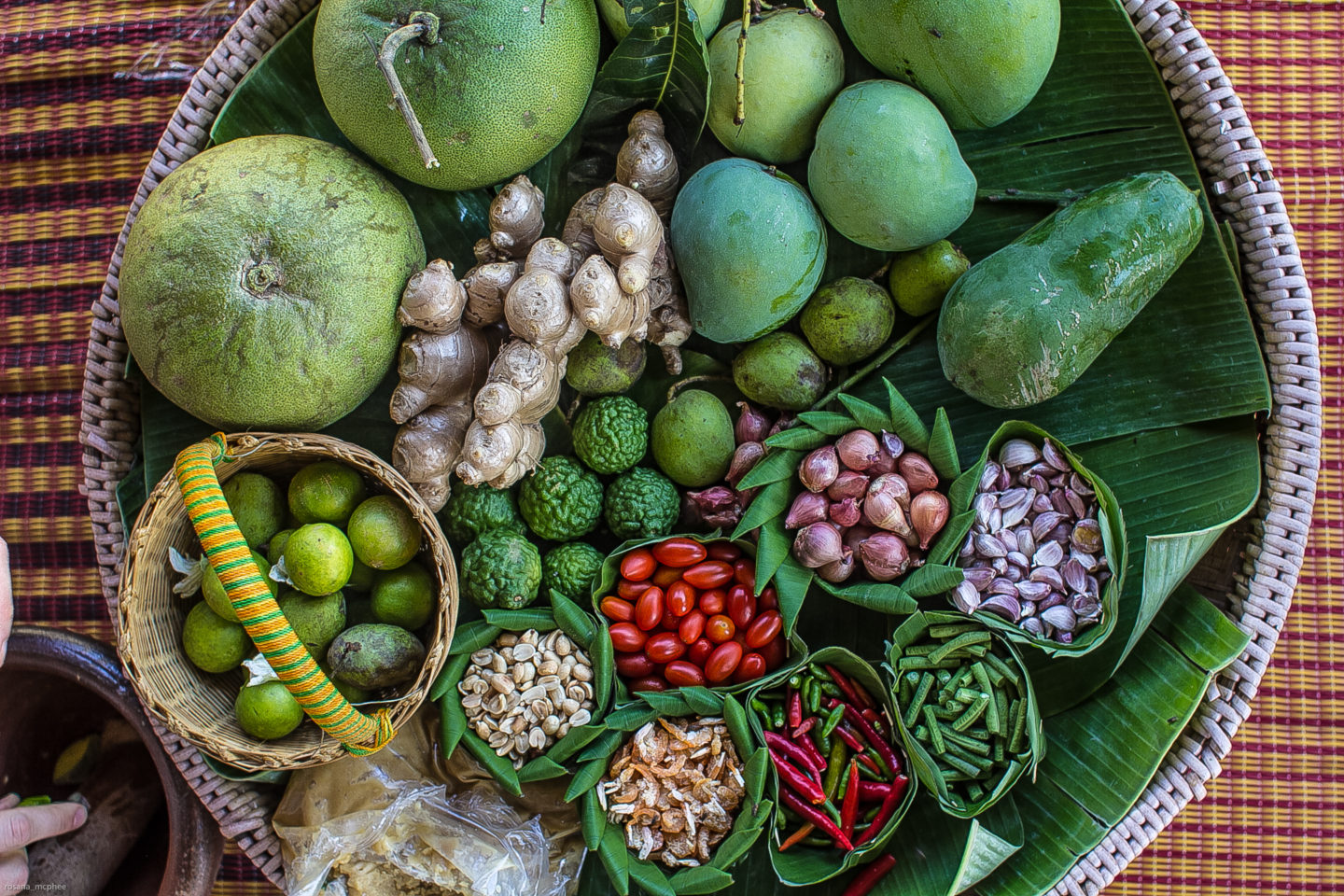
It’s a dream for food lovers to experience a sneak peek of fine dining, to visit the kitchens of Michelin-starred restaurants and remote farms where some amazing far-flung produce originates – that is a fantastic treat – In this post expect a truly amazing and unique gastronomic experience in Bangkok and beyond.
As part the Young Thai Chef of the Year (UK) competition prize organised by The Department of International Trade Promotion (DITP), Thai Embassy and Red Communications, I had first-hand insight into four very different food businesses in Thailand.
Behind the scenes at fine dining restaurant Bo.lan

Bo.lan is run by Thai Duangporn ‘Bo’ Songvisava, named the best female Asian chef in 2013, and Australian Dylan’ Lan’ Jones in Bangkok. It’s described as ‘traditional Thai with fine-dining flair’: influenced by both home-cooking and street food, it offers dinner as a set menu only with sharing plates. This place was our first gastronomic experience in Bangkok.
The restaurant is housed within a traditional and atmospheric Thai residence that’s been transformed into a beautiful fine-dining restaurant, decorated with interesting Thai touches throughout the place. Bo.lan is very well known and respected within the Thai restaurant community. It’s currently no. 19 in at the Asian 50 Best Restaurants 2019.
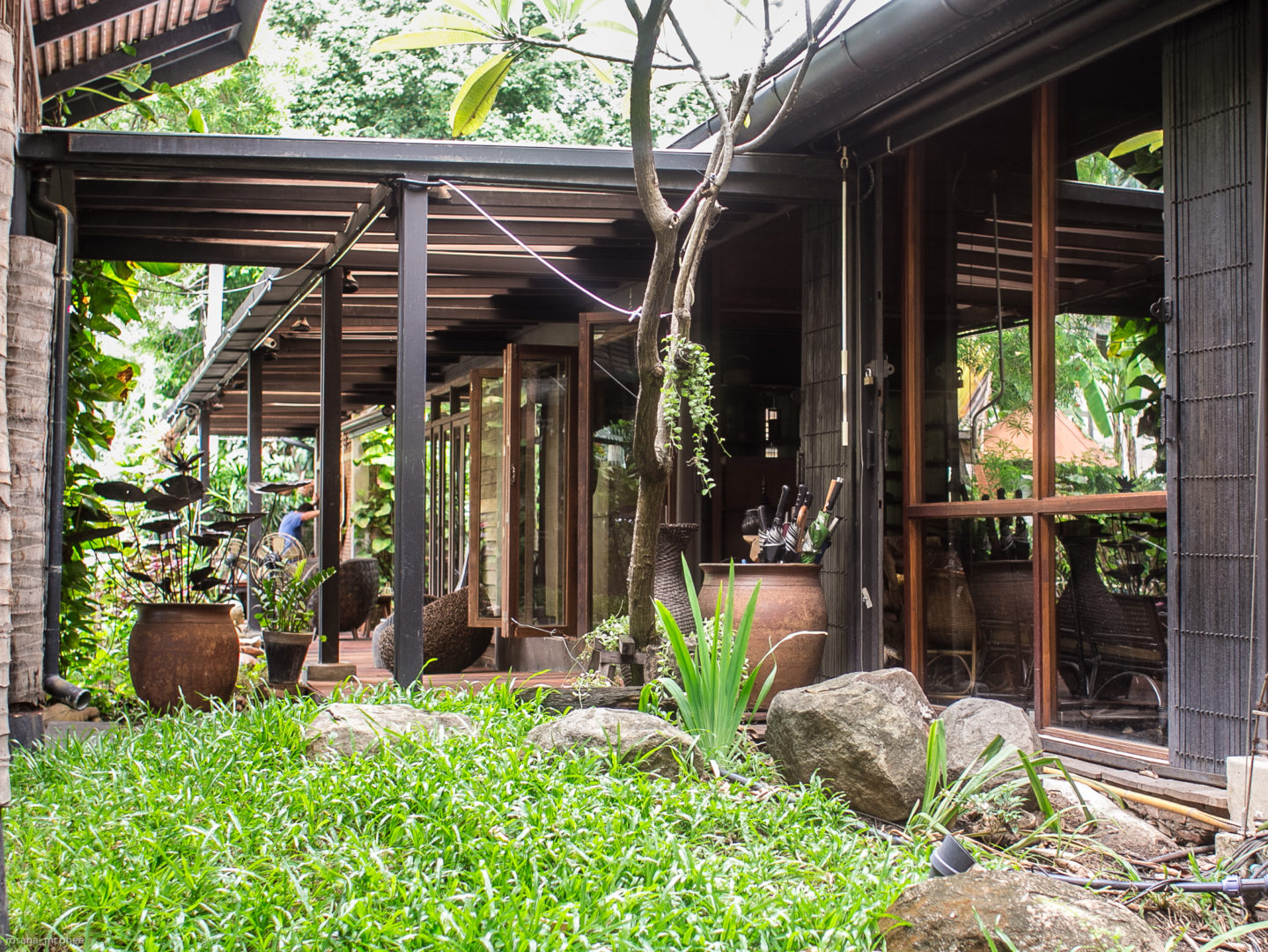
A look behind-the-scenes for me and Jamie doing a full day ‘guest assisting’ at their kitchen saw both of us learning a lot about Bo.lan’s way of cooking and, for me in particular, about Thai ingredients.
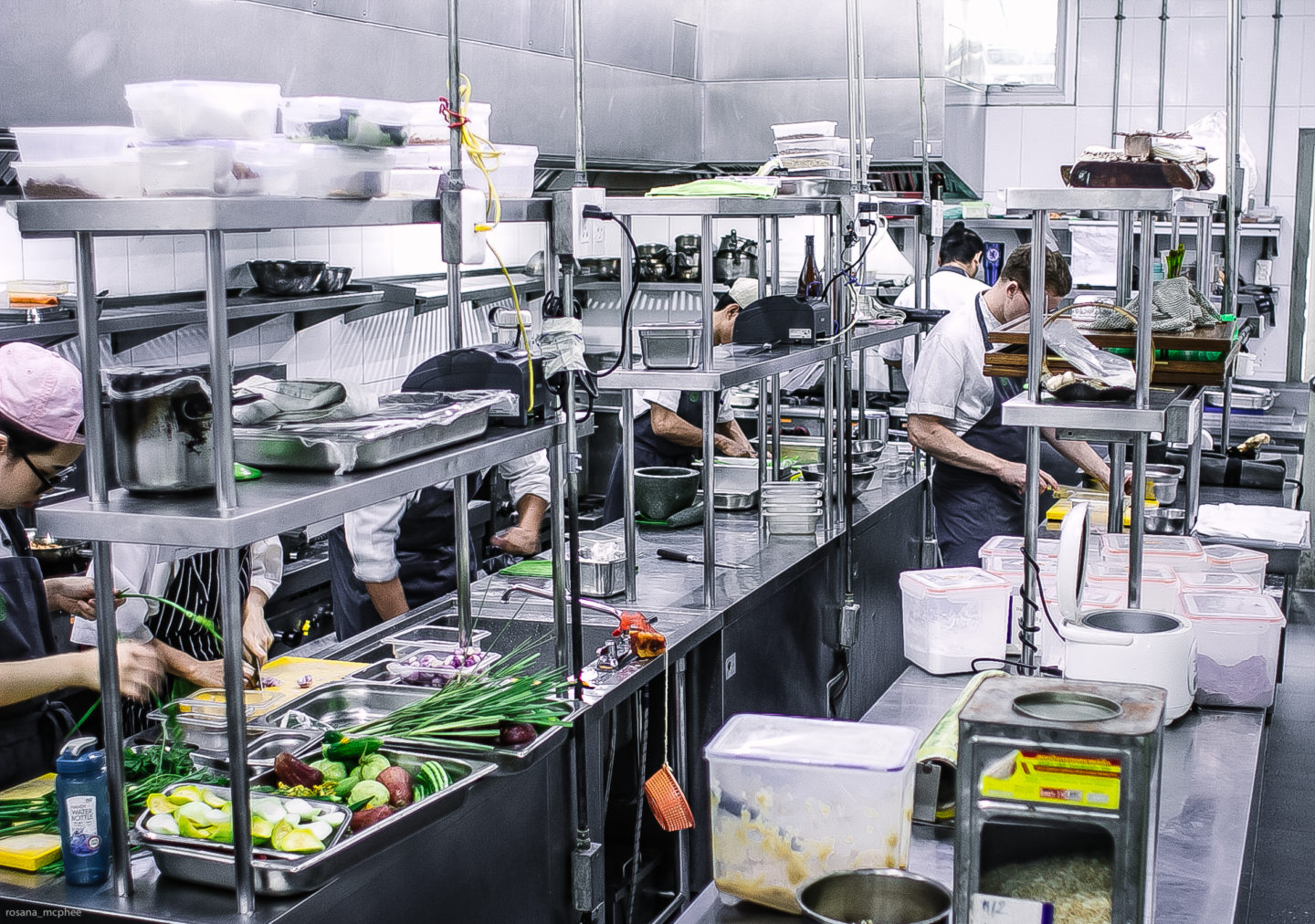
We arrived at 2pm on a sweltering Wednesday to find the kitchen in full swing. Some of the staff are employees and some are trainees who come from overseas to train for a few months. This practice is quite common in restaurants of such calibre as Bo.lan.
The staff break for lunch around 4pm and its set family style at the courtyard off the kitchen. The atmosphere is buzzing, and the staff lunch is a proper Thai affair, no holding back on the chillies, including a delicious fermented fish guts relish, which I loved, to the surprise of the Thais around the table – some of them can’t stand the stuff. I couldn’t get enough of it.
During the day we saw some exciting cooking methods and produce in the kitchen. The staff were amiable and eager to show what they were preparing. I tasted almost everything!
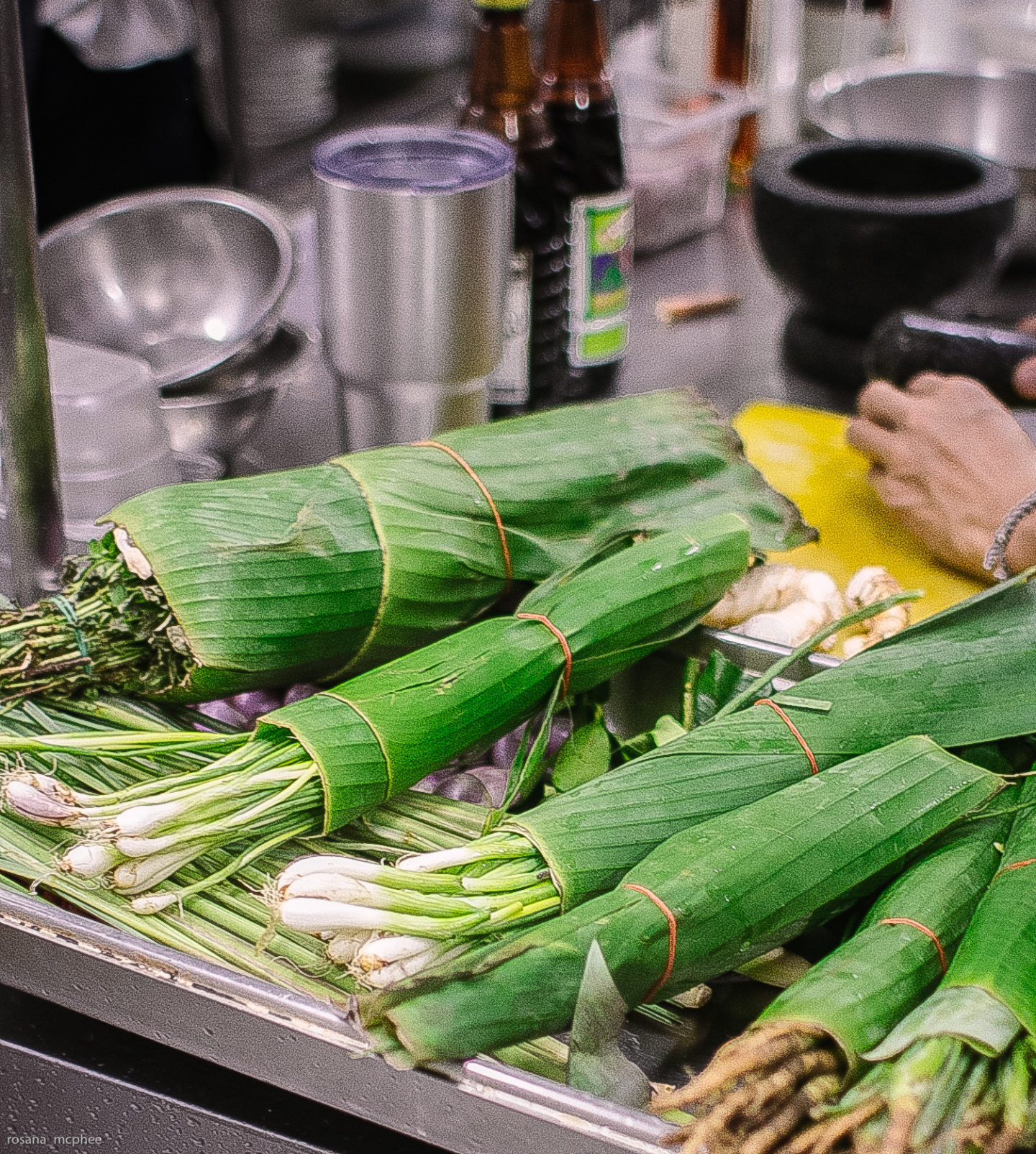
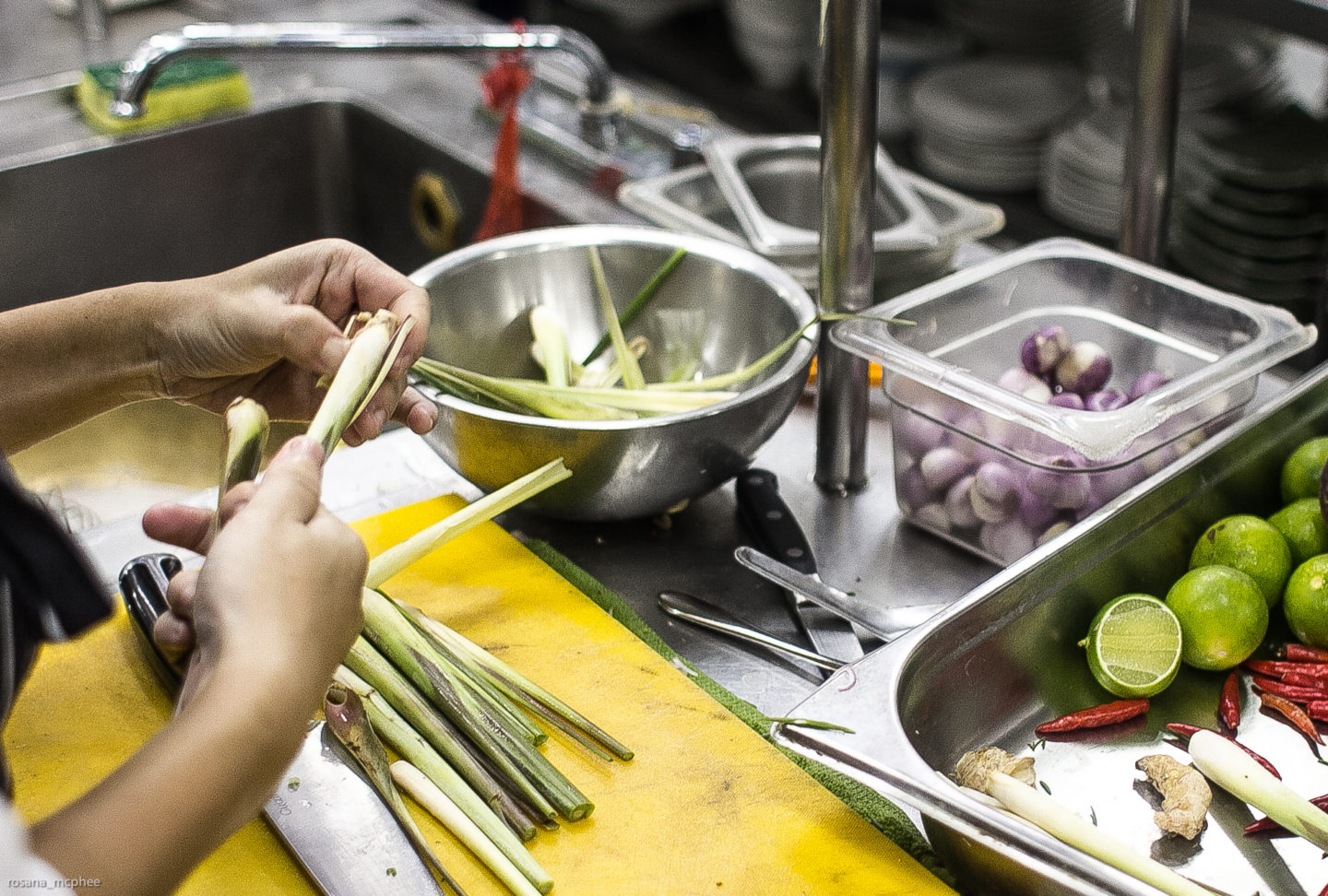

I left around 6pm, but Jamie stayed on until the end of service. It was a mind-blowing, intense experience and time flew by – it’s true what they say about it going fast when you are having fun.
A visit to Chim by Siam Wisdom
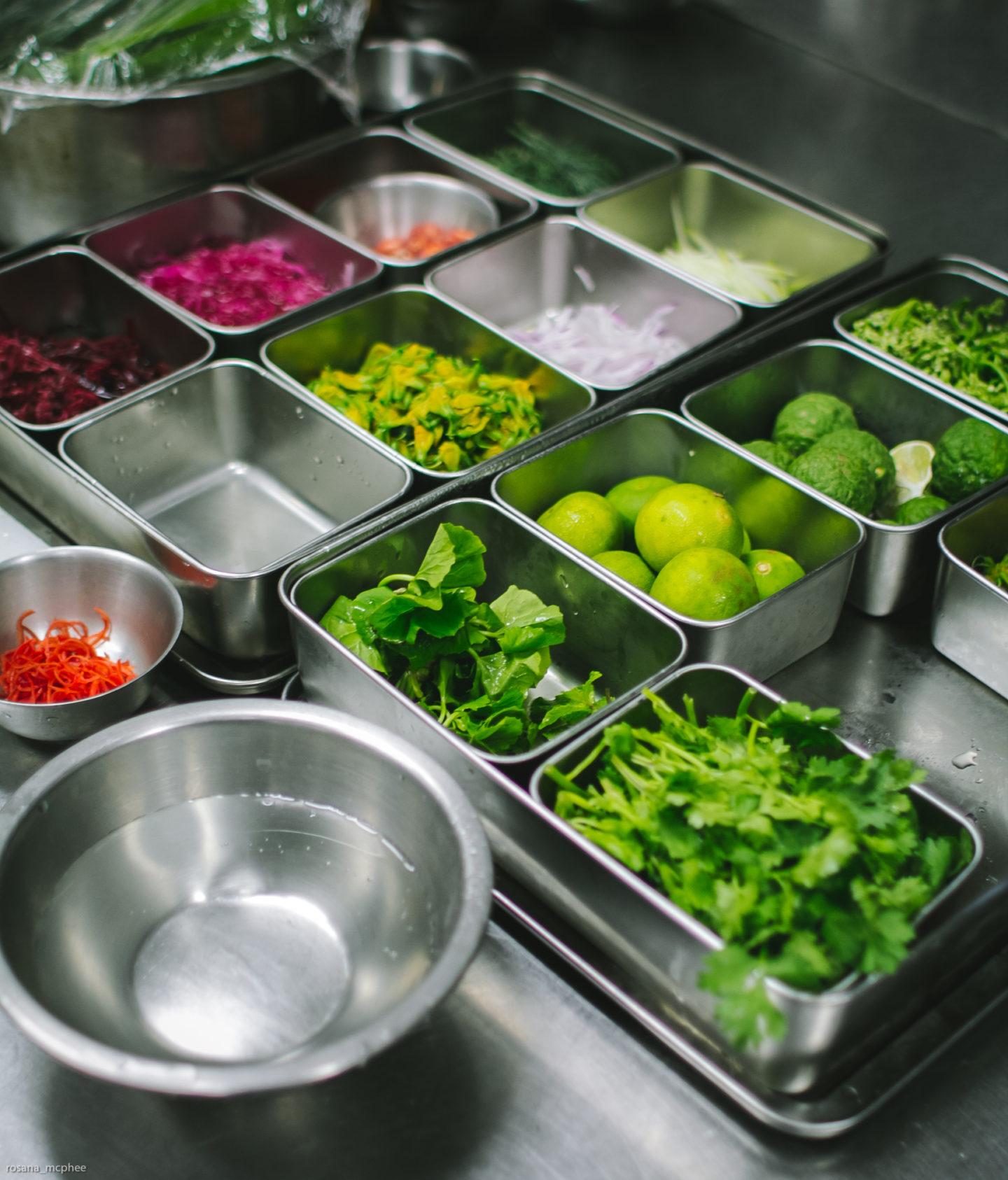
On the next day it was time to experience another Thai kitchen in Bangkok: Siam Wisdom, a one-Michelin-starred restaurant clustered in the Japanese quarter of Bangkok. It was our second gastronomic experience in Bangkok.
Siam Wisdom is headed by chef Thaninthorn “Noom” Chantrawan. Trained in Europe, he worked for 14 years in top London establishments. Nowadays, chef Noom is frequently seen on TV in the Iron Chef Thai edition.
This experience was very different from the previous day’s. Nevertheless, it was very informative. We arrived at 2pm and preparation for the day’s proceeding was already done in the morning, so this time we could see some dishes being prepared especially for us.
The atmosphere at Siam Wisdom was very relaxed and ‘everyone is family’. Again the restaurant is set in a traditional Thai house. They serve lunch and dinner, 45 covers each.
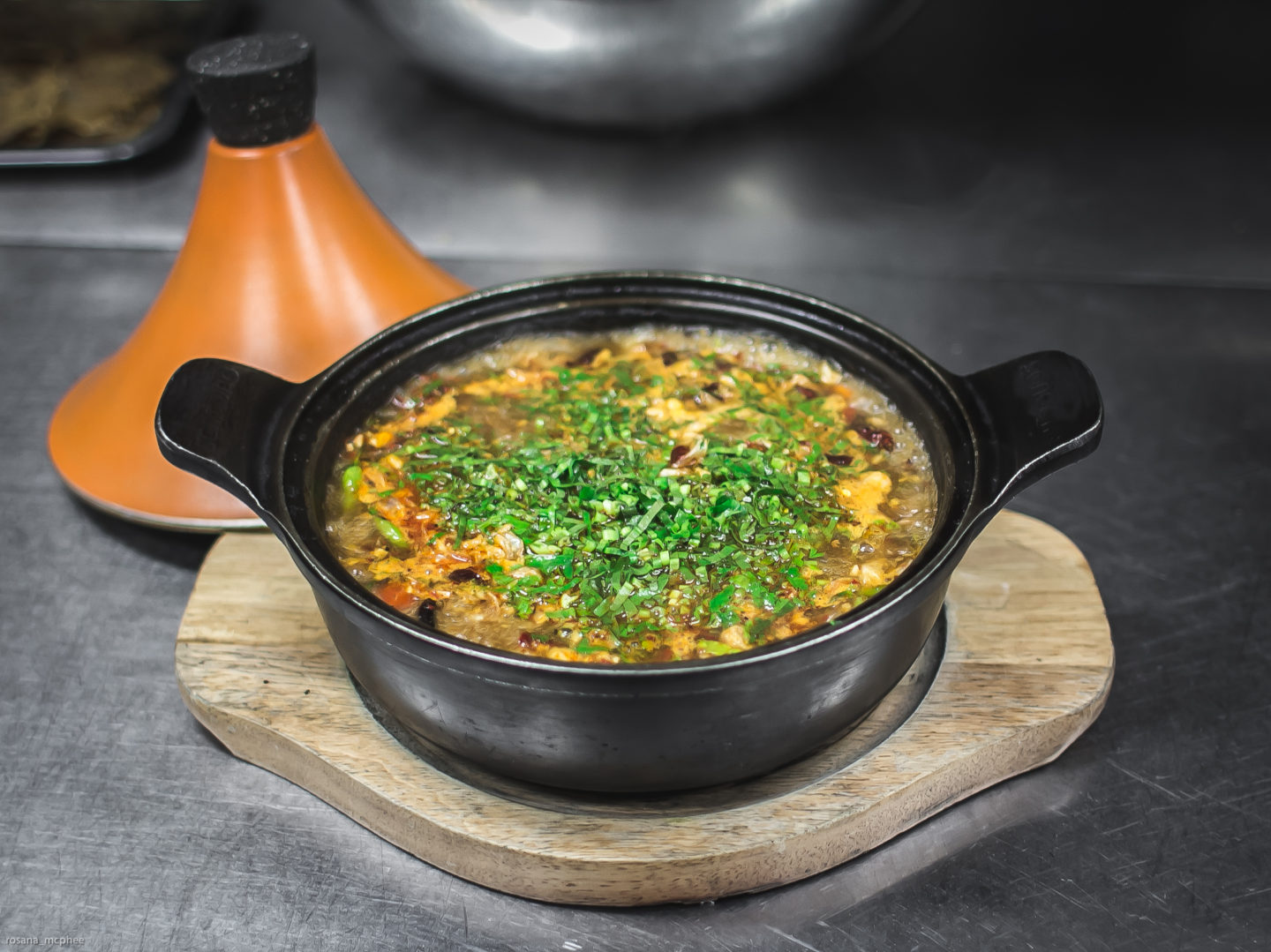
Among the dishes we saw and ate were Lost Recipe Soup, a signature dish called Tom Yum Plachon Bo-Larn, which is a variation of tom yum soup from the early 19th century (found in an ancient book). It features snakehead fish, a freshwater fish, in a chunky, spicy red broth packed full of herbs, shallots and the chef’s blend of nam phrik phao (Thai spicy chilli sauce) and smoky homemade chilli jam. This old recipe was found and brought back to life by chef Noom. It is a rich and well-balanced dish that is on their menu at the moment.
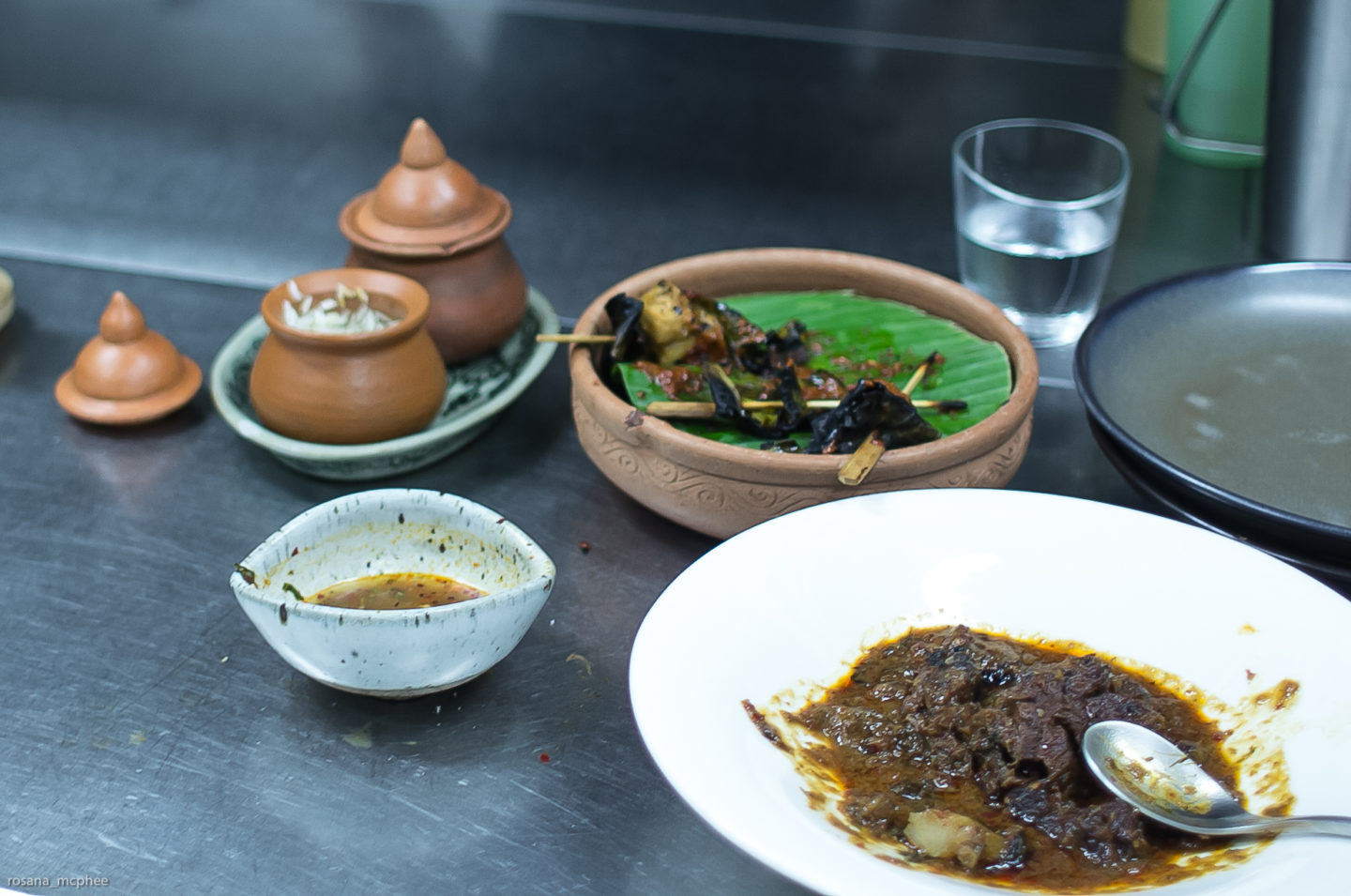
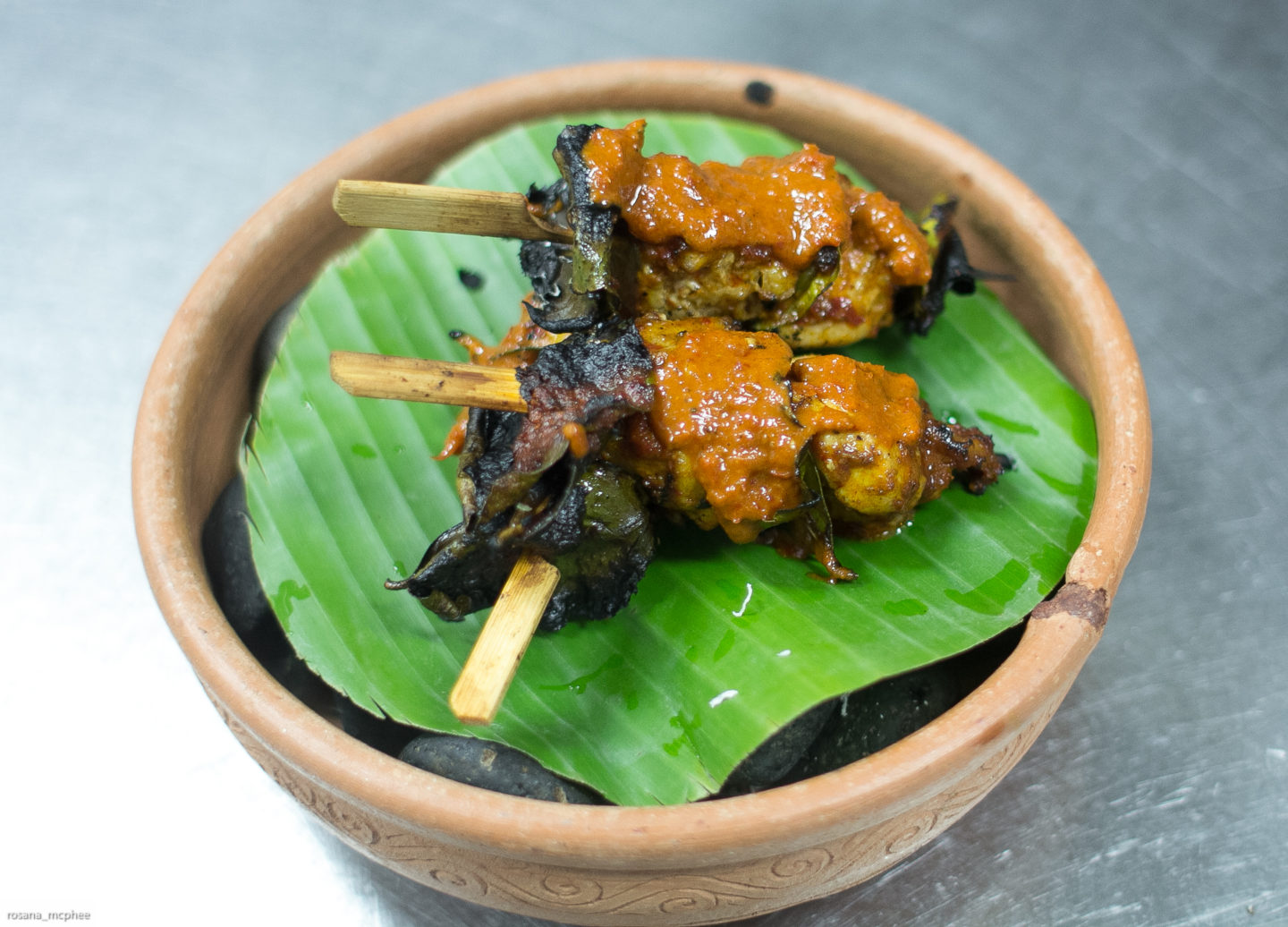
Next we tasted the slow-cooked (in the oven) beef with potatoes in a fantastic and gutsy, yet mildly spiced sauce. Well it was mild for me…
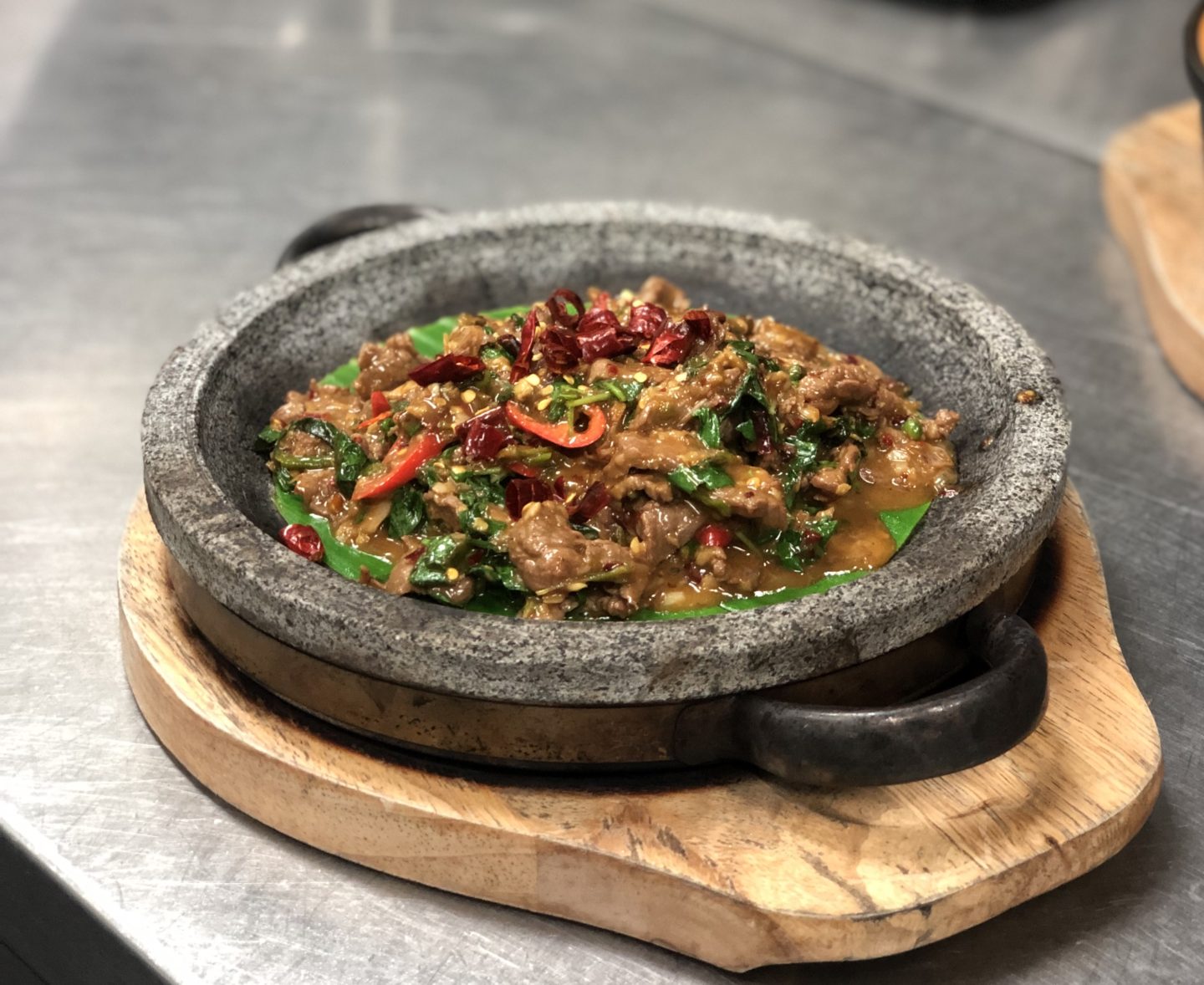
The stir fried beef was literally sizzling and an unusual combination of spices, herbs and citrus – delightful.
The finale was a super smooth and satisfying coconut ice cream topped with toasted coconut shavings and a ‘Thai cookie’ – more like a wafer that is entirely addictive.
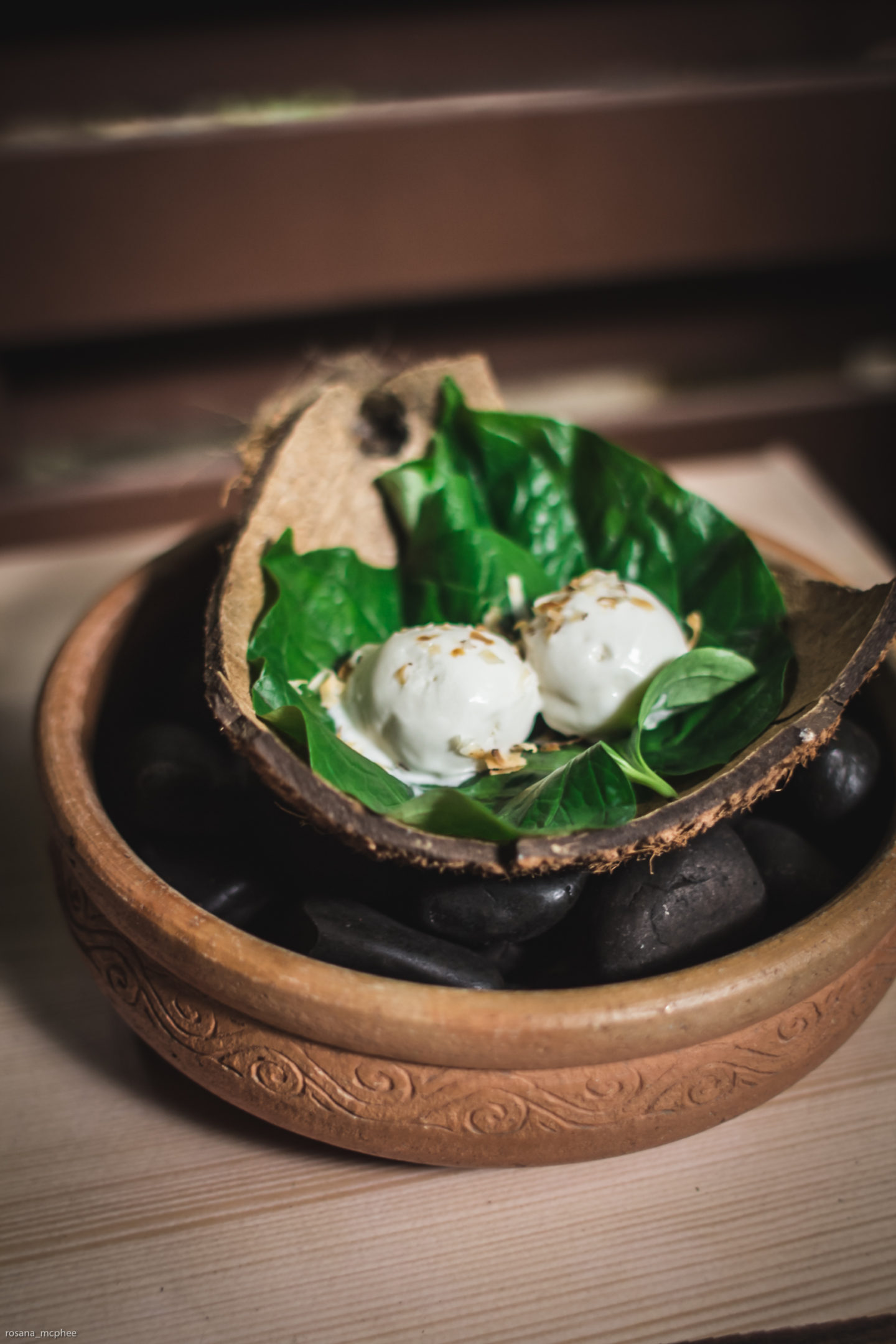
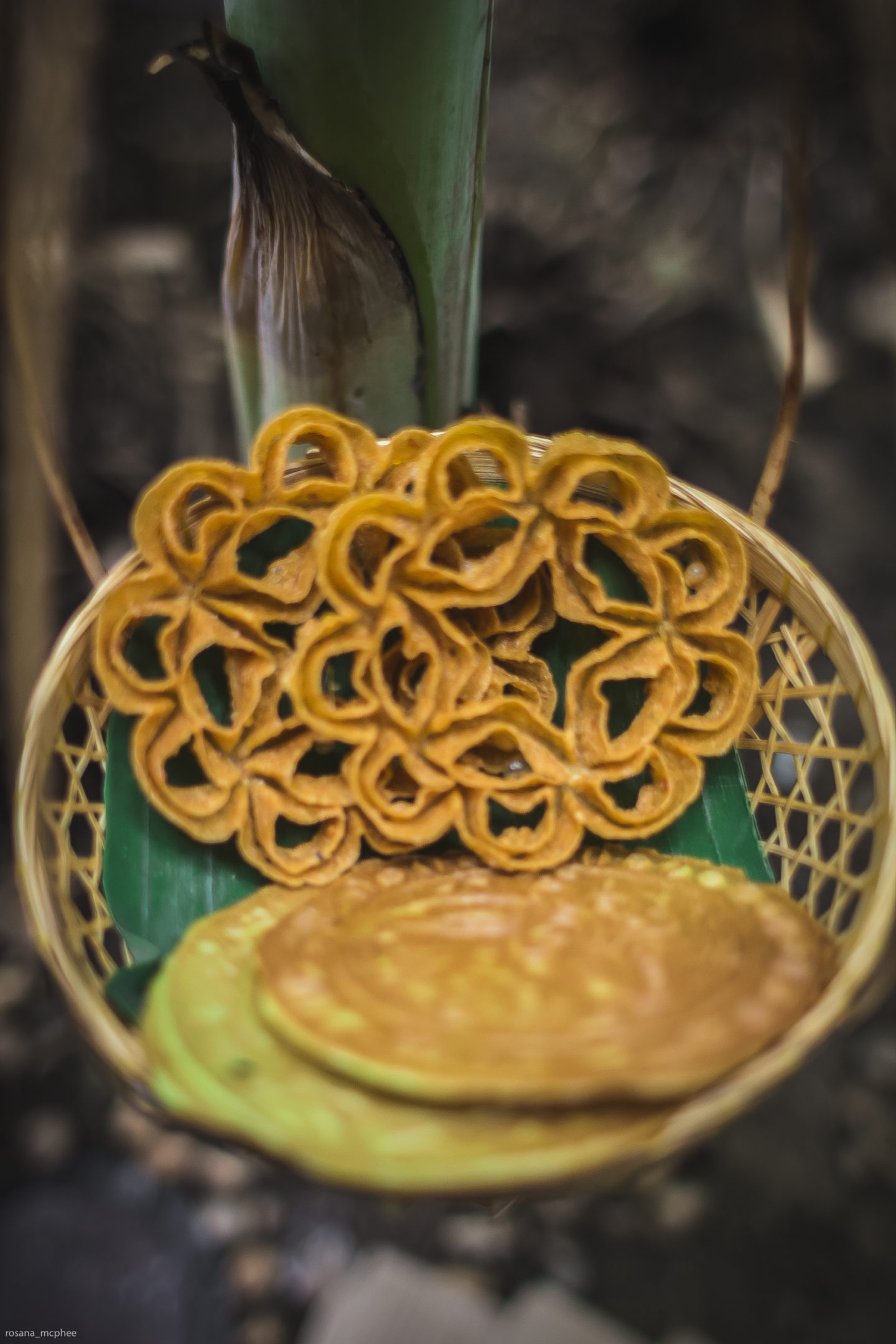
These two days well be engraved in my memory for many years to come. What a privilege and honour to witness how high-end Thai establishments work and to learn more about their cooking methods and Thai produce.
A day exploring Red Rocket Farm in Kanchanaburi, Thailand
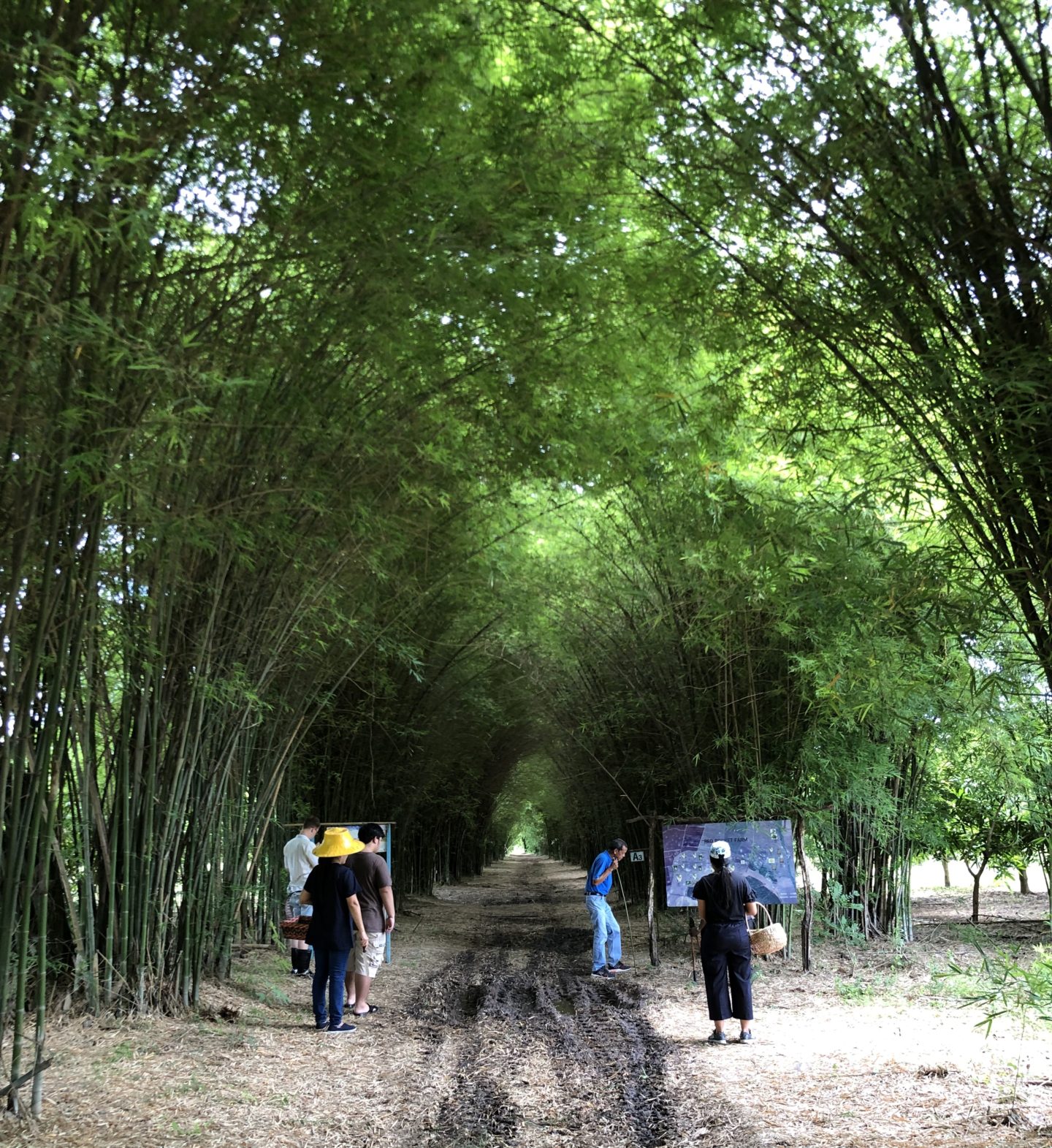
This remote farm is about 3½ hours’ drive from Bangkok. As soon as we arrived, we were off to explore the farm and forage for ingredients for our lunch – my kind of heaven. At the farm, they don’t buy food, apart from protein, meat, fish etc. They are mostly self-sufficient. It was our third gastronomic experience beyond Bangkok.
We had a walkabout on the farm under the scorching sun – almost too hot to be comfortable – but on the way to the mango grove, we walked through a long bamboo tunnel added by our host and farm owner, Mr Soonthorn’s to encourage biodiversity: a very welcome place for the workers to take a break from the sizzling heat. Subsequently, when the bamboo dies, it is sold to make chopsticks and other products. It’s all part of the well-being of the workers, the environment and conservation.
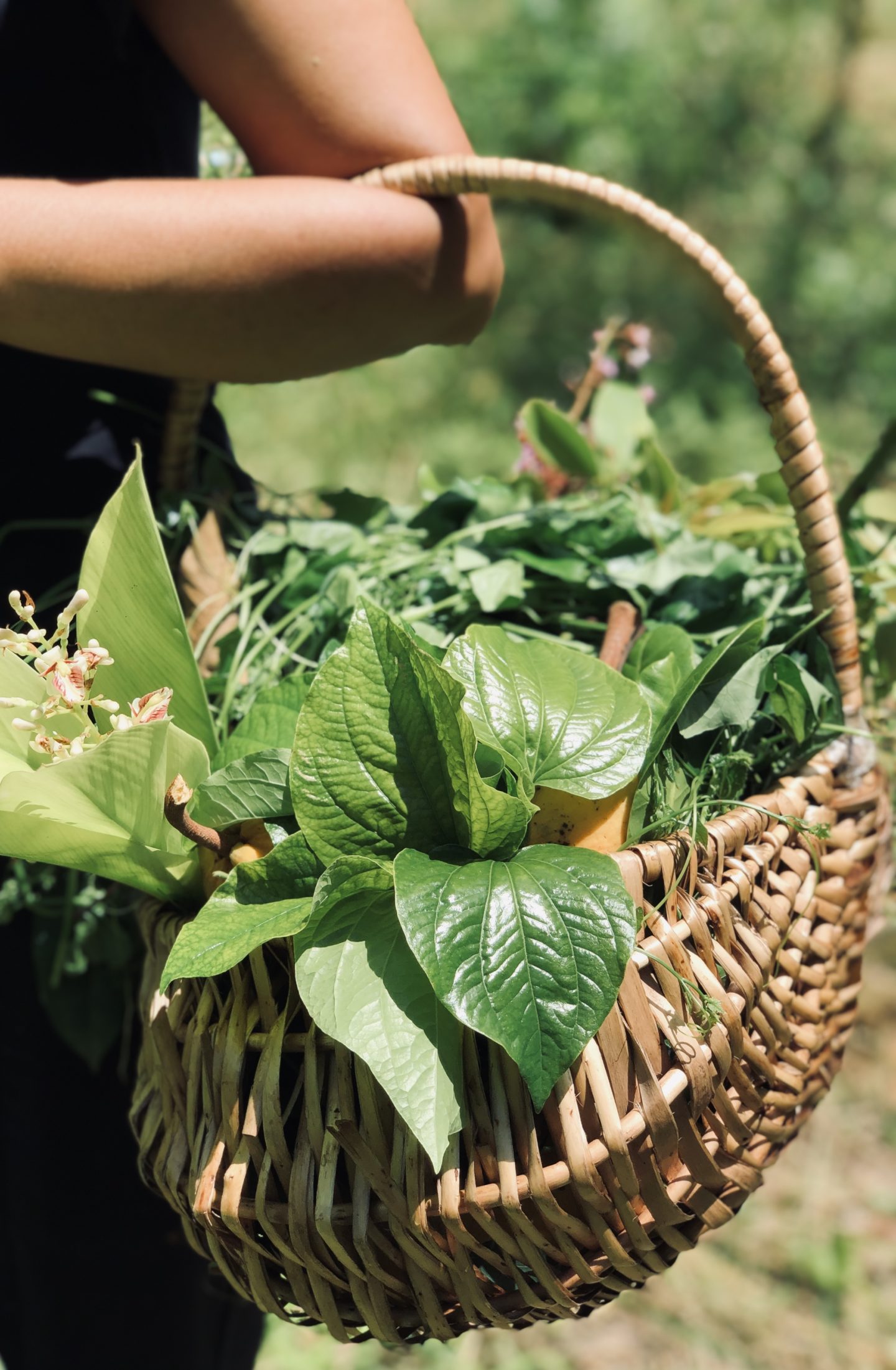
This farm grows mainly mango and pomelo but there are some star-fruit and coconut trees, galangal, dragon fruit, and lots of other edible green plants and flowers used in cooking.
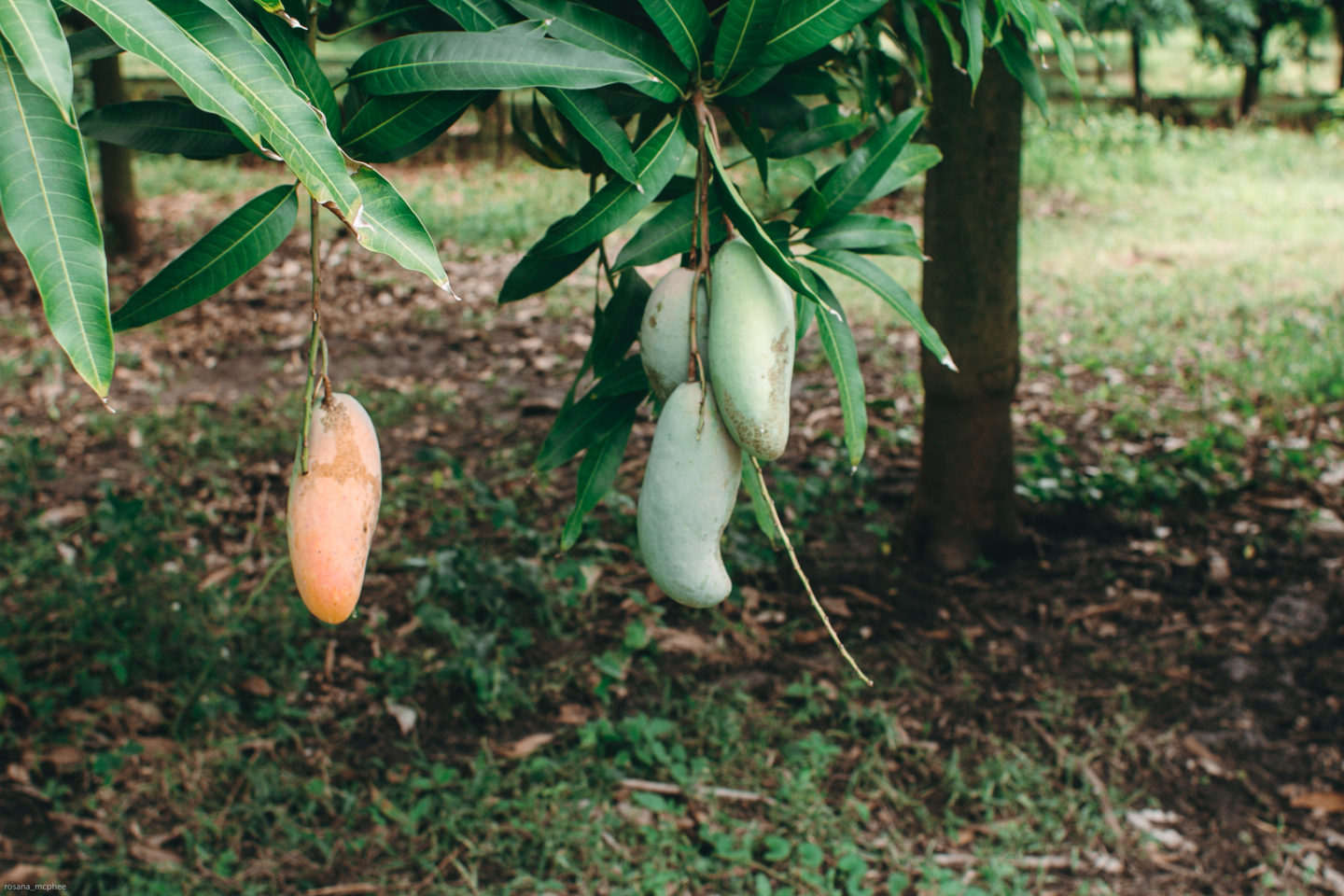
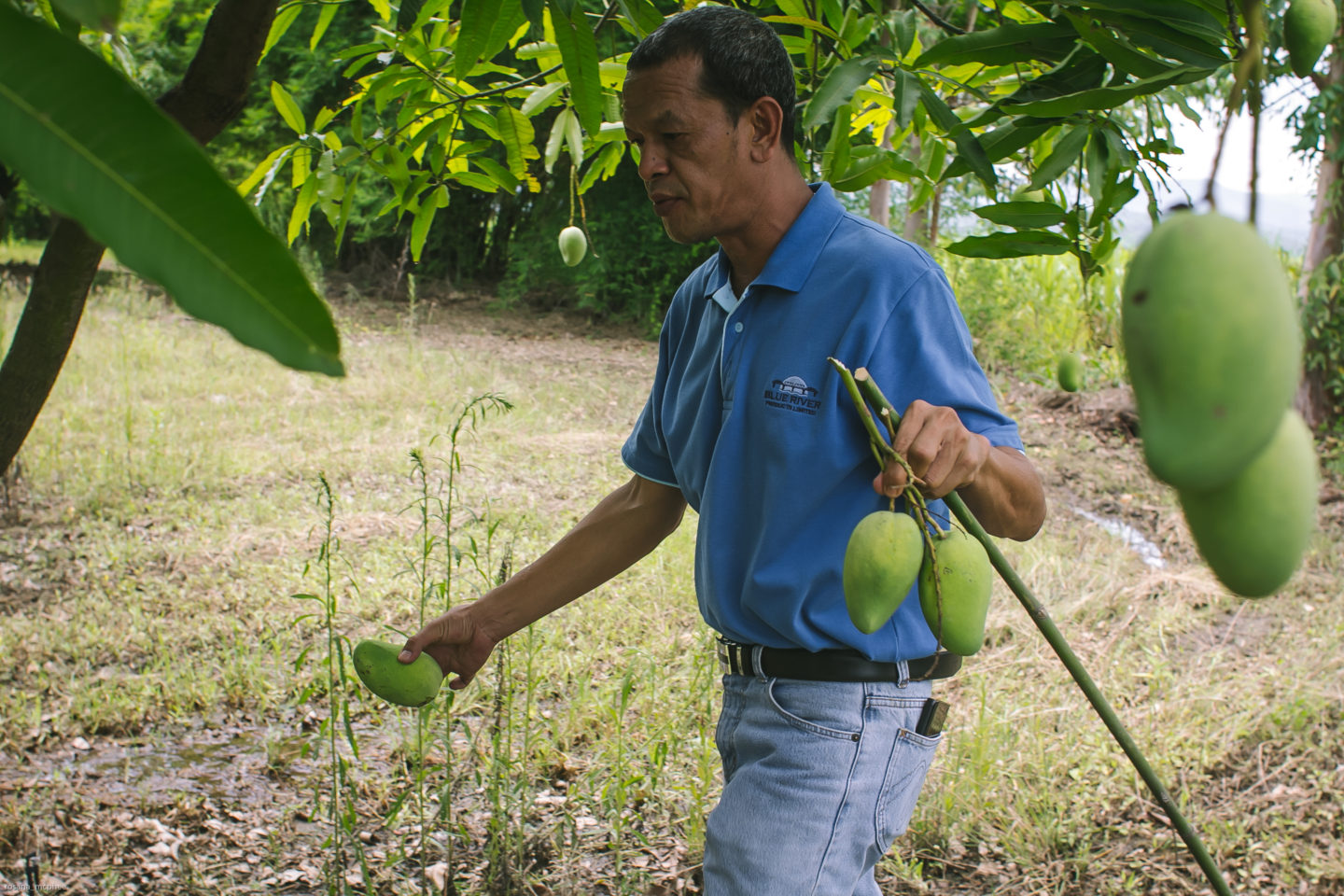
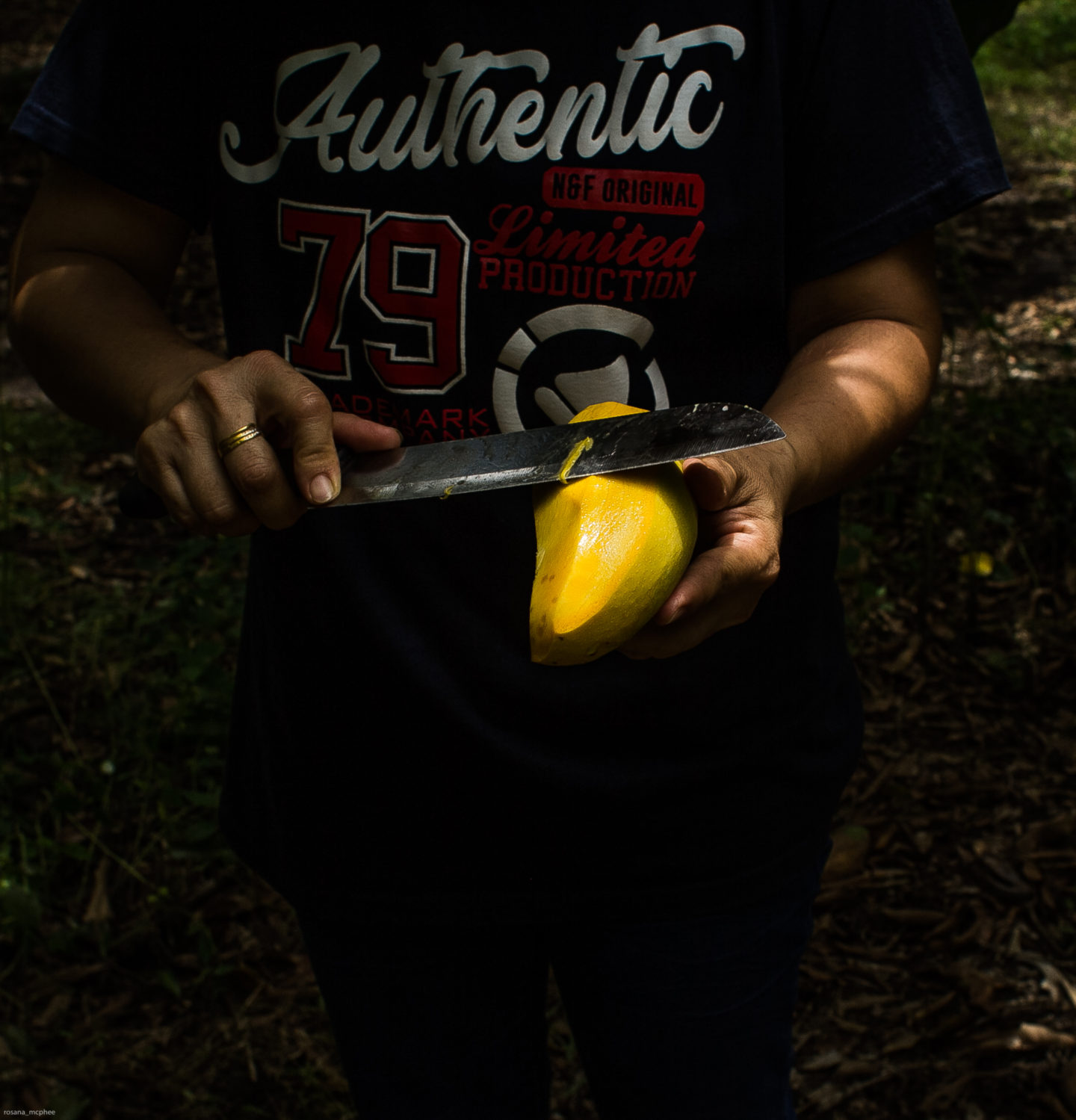
Unfortunately, we came just out of season for the mangos (a few left), but it was still great to see the orchids, plants and trees to see how these produce grow. The foraging of the plants is usually to pick young leaves that are used in salads or just eaten raw.
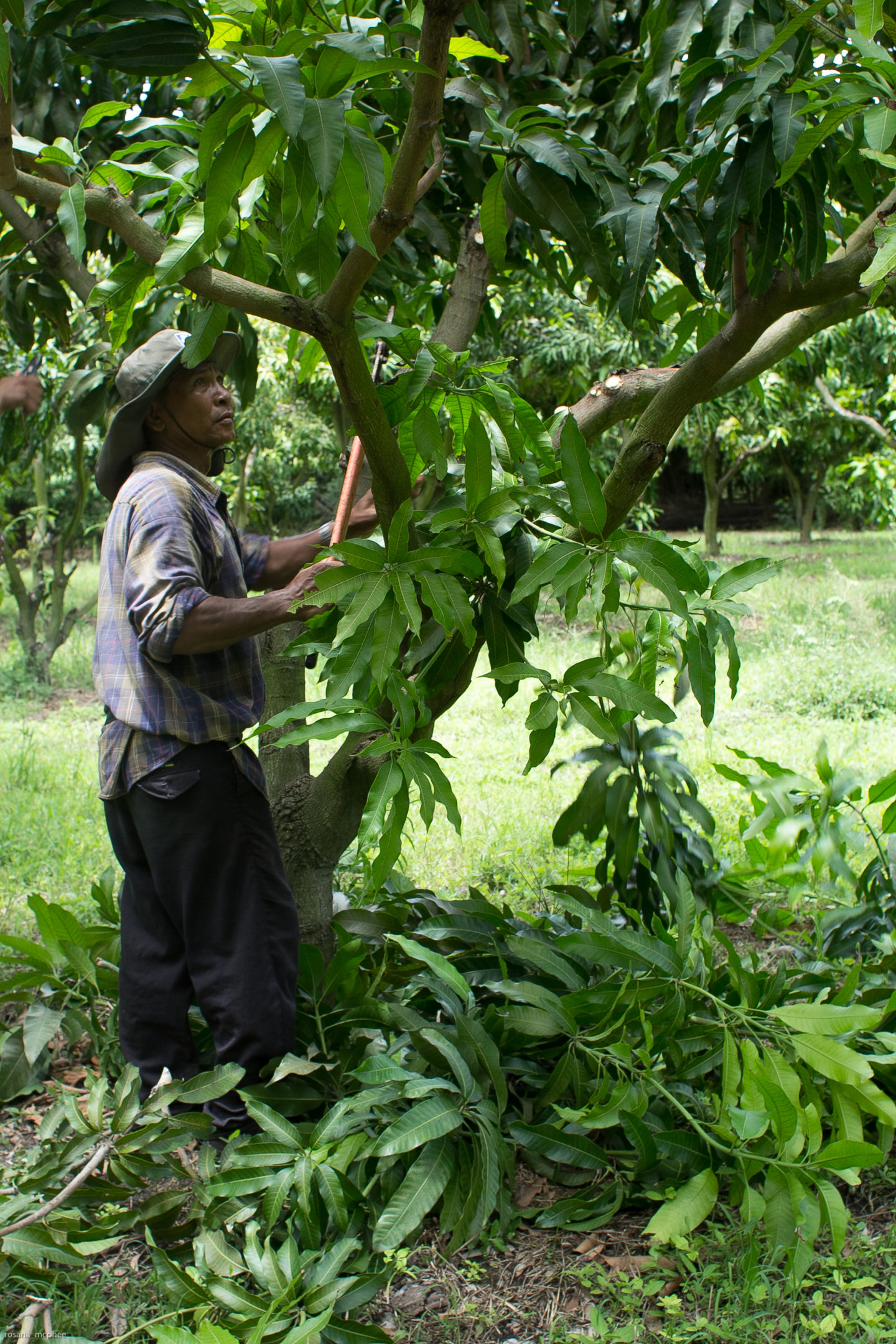
At the moment they are starting to prune the mango trees. It is an intense job that permits the sun to get to the centre of the trees that minimises, so that the trees make the most of the natural fertilisers.
The extensive pruning also gives the farm more fruits, about 20% more, so if your tree usually gives 100 mangos, pruning will yield 120 mangos. One of the restaurant’s most famous dishes using mangos is sticky mango rice, which uses the nam dok mai (a type of mango), a wide variety in Thailand.
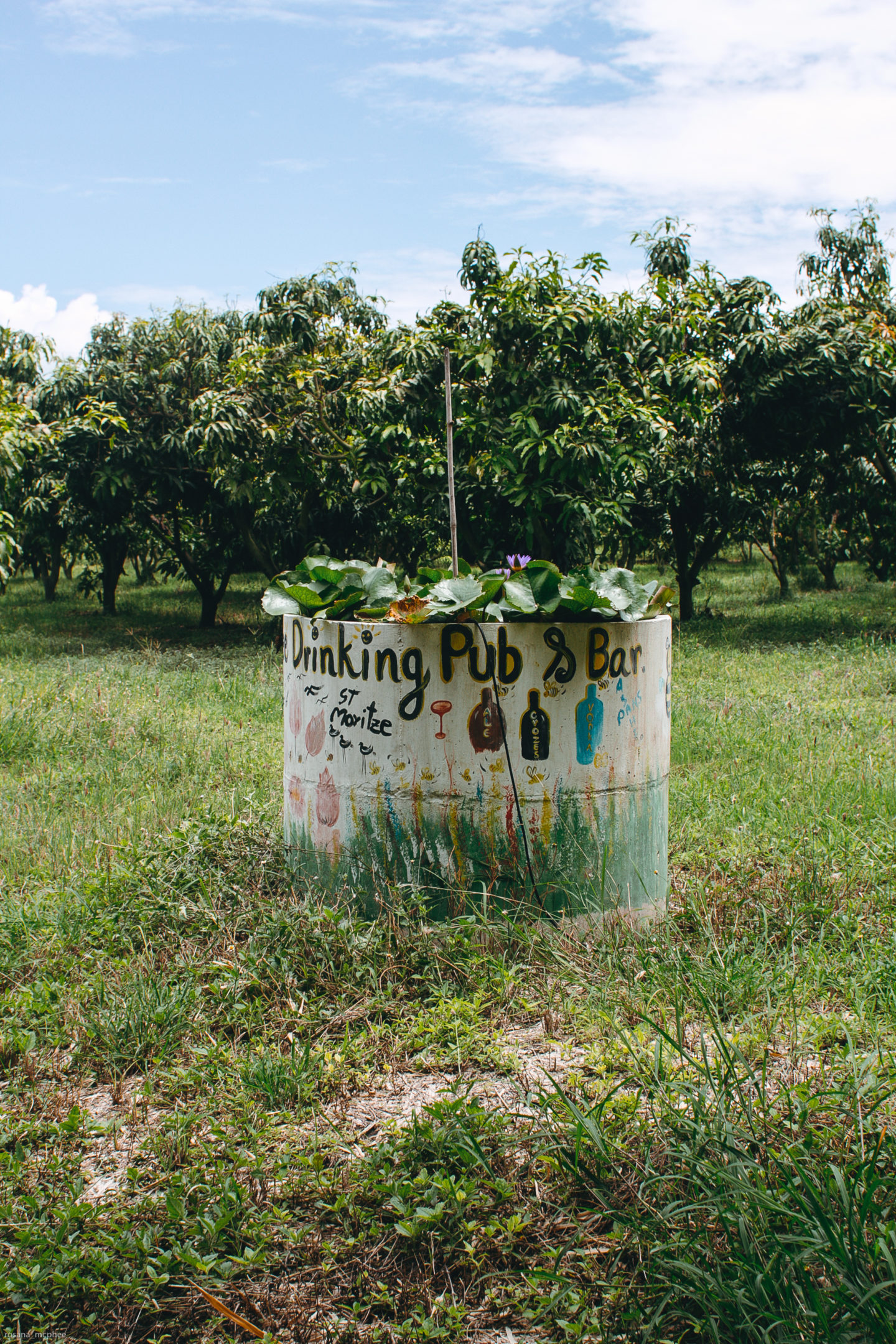
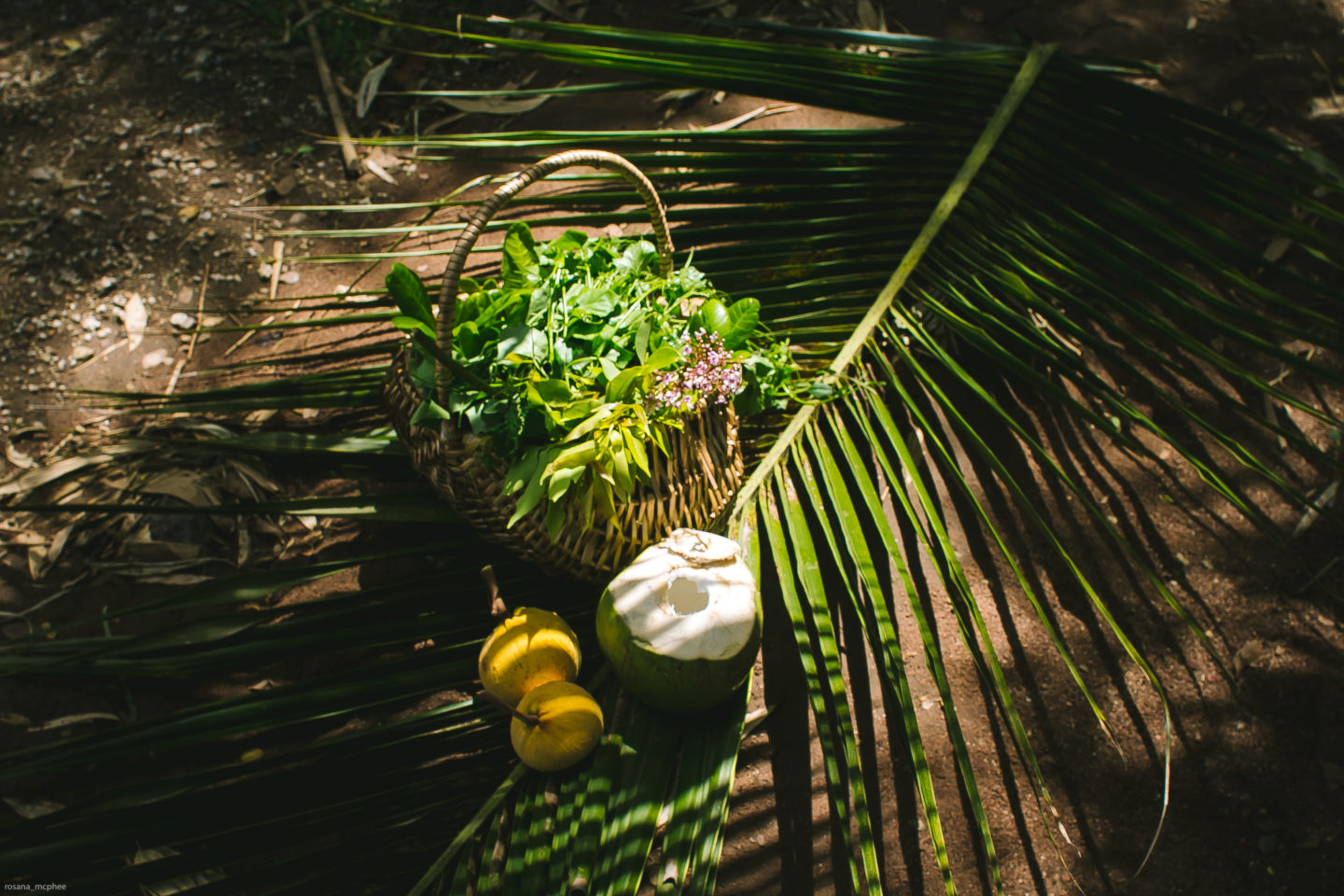
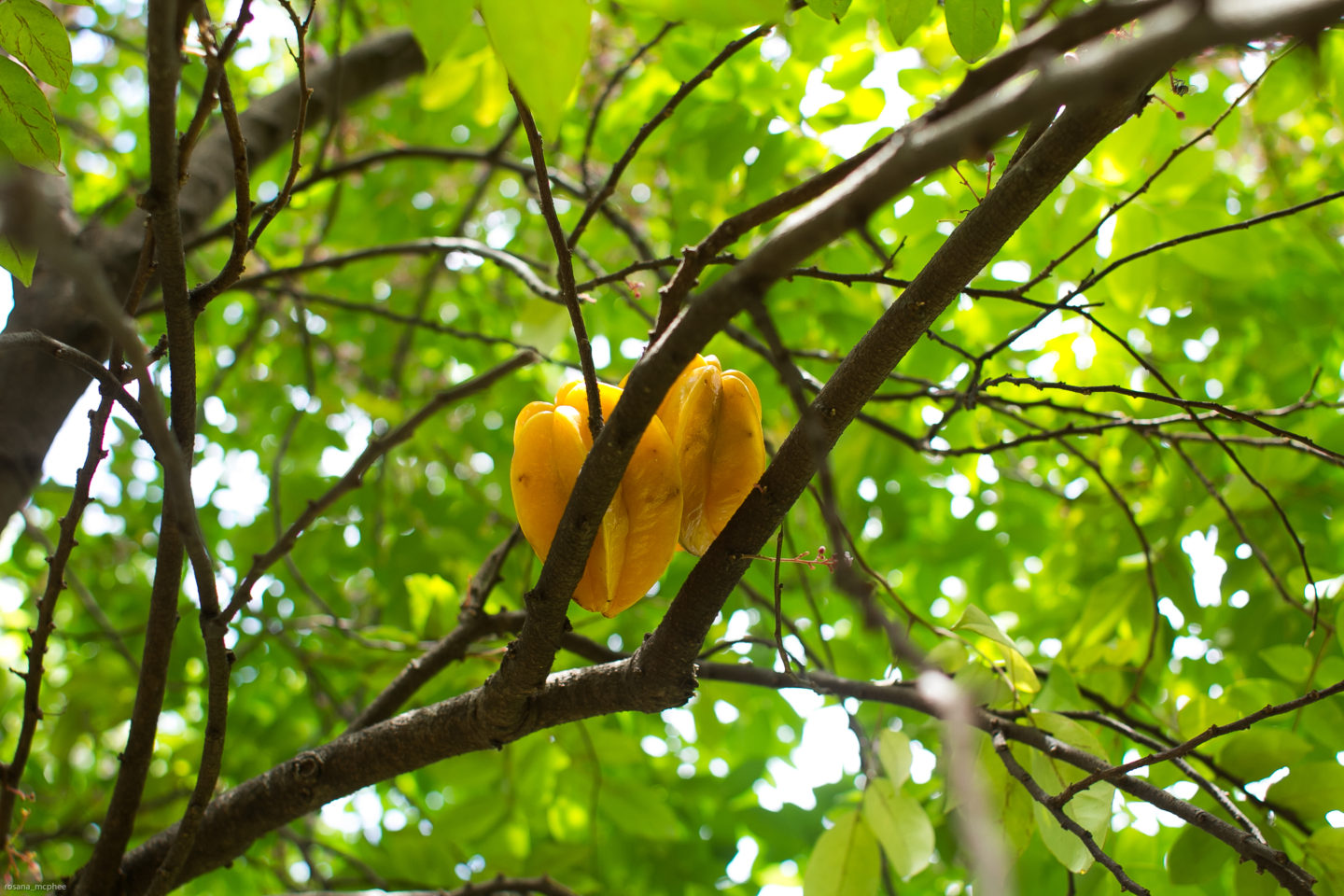
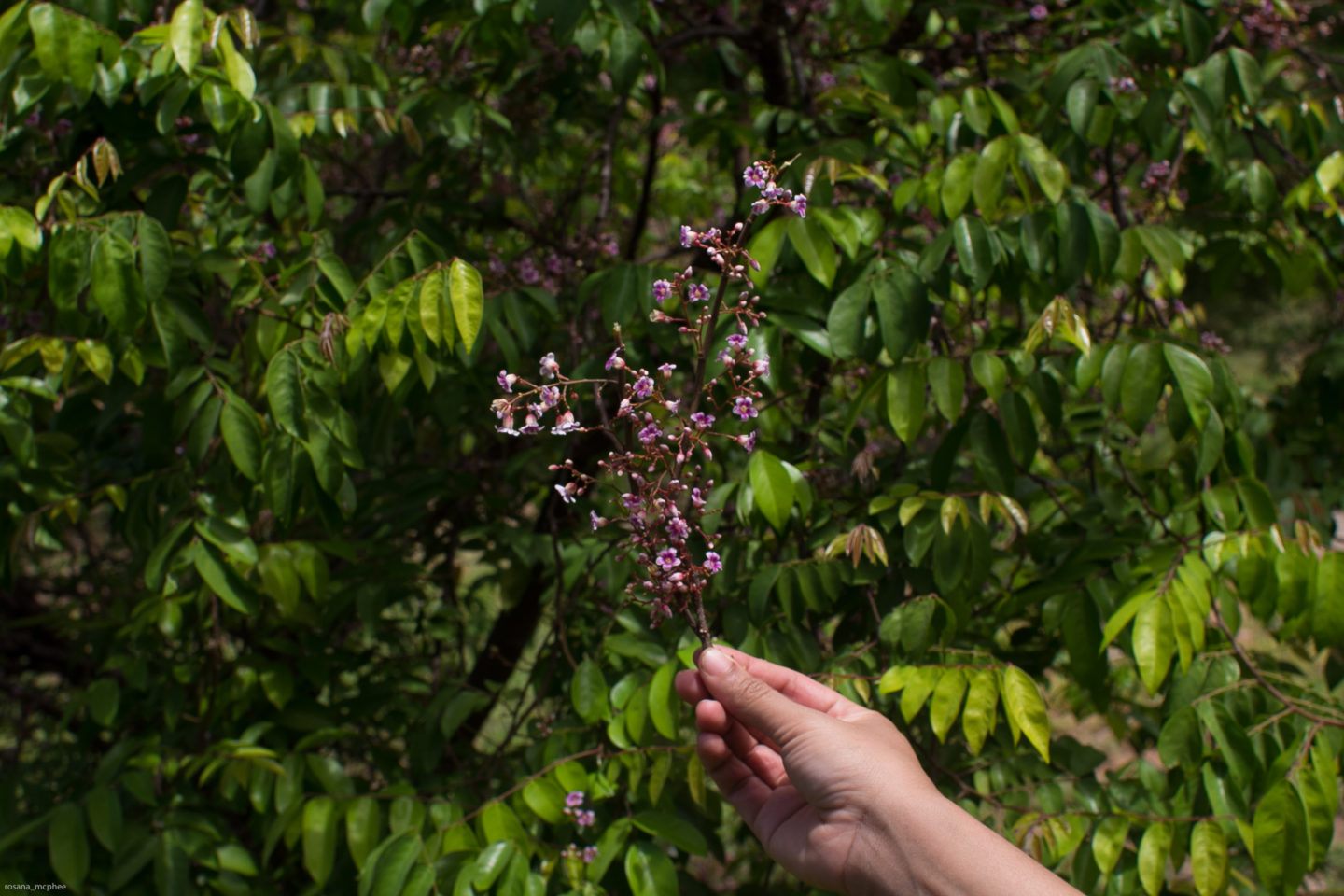
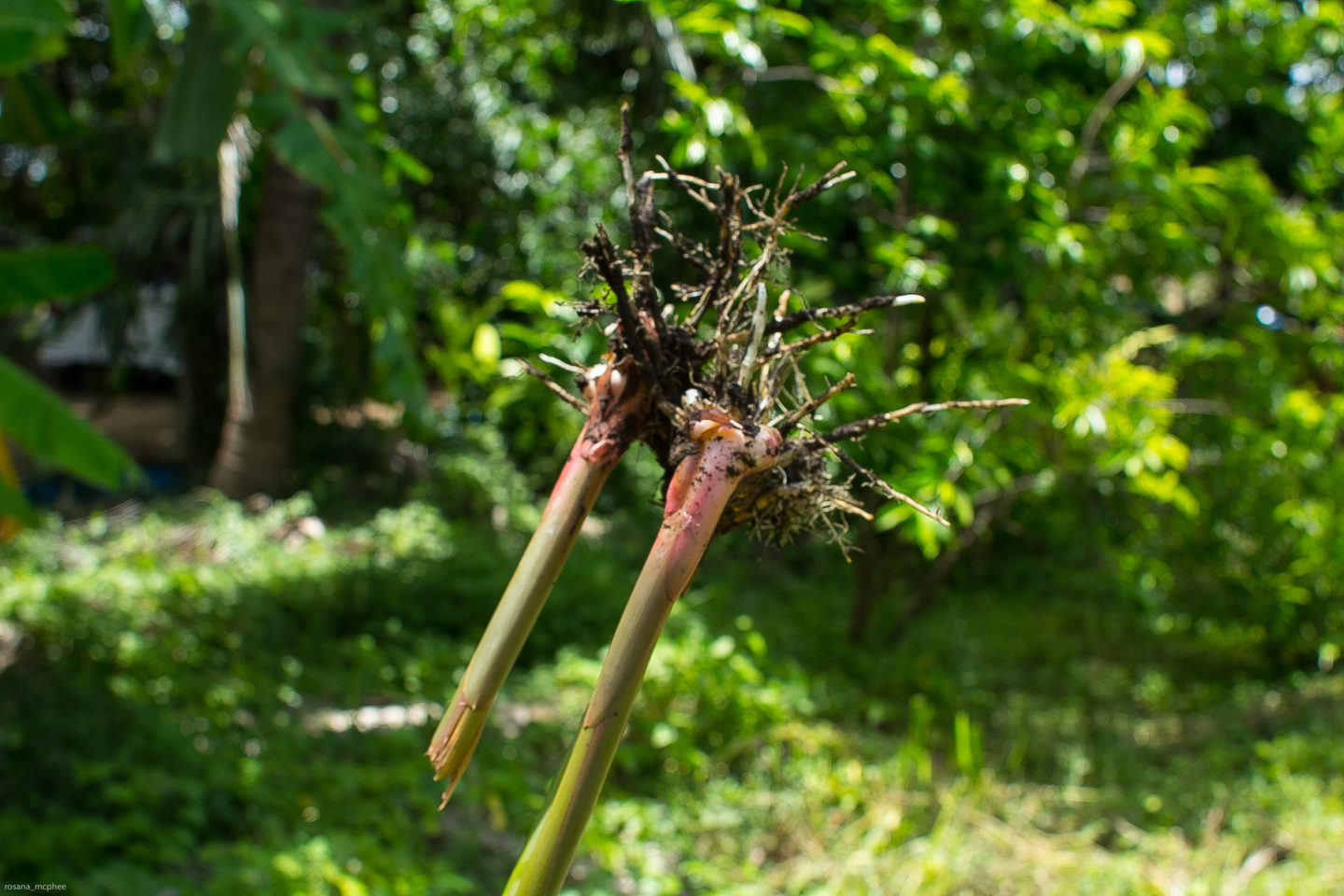
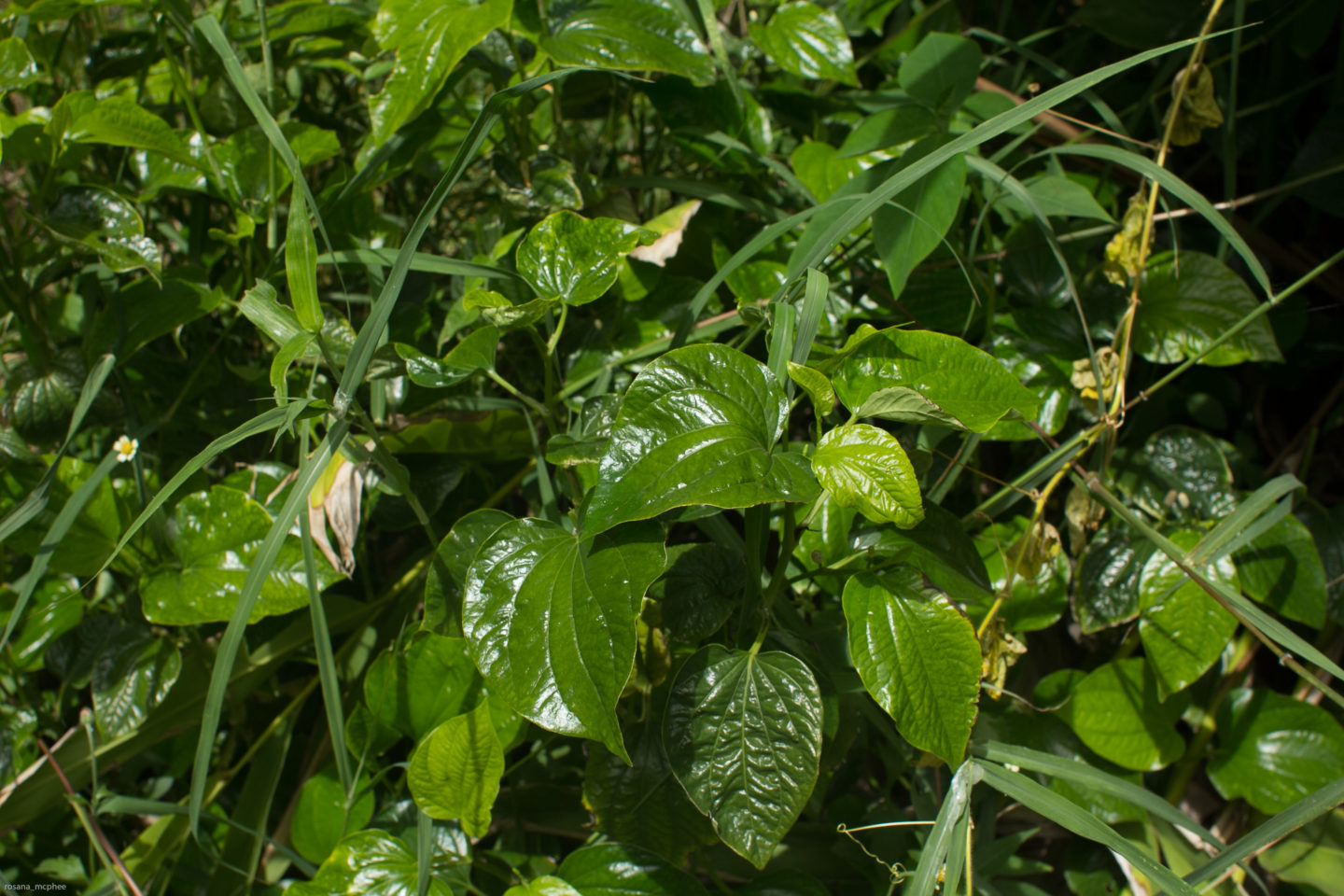
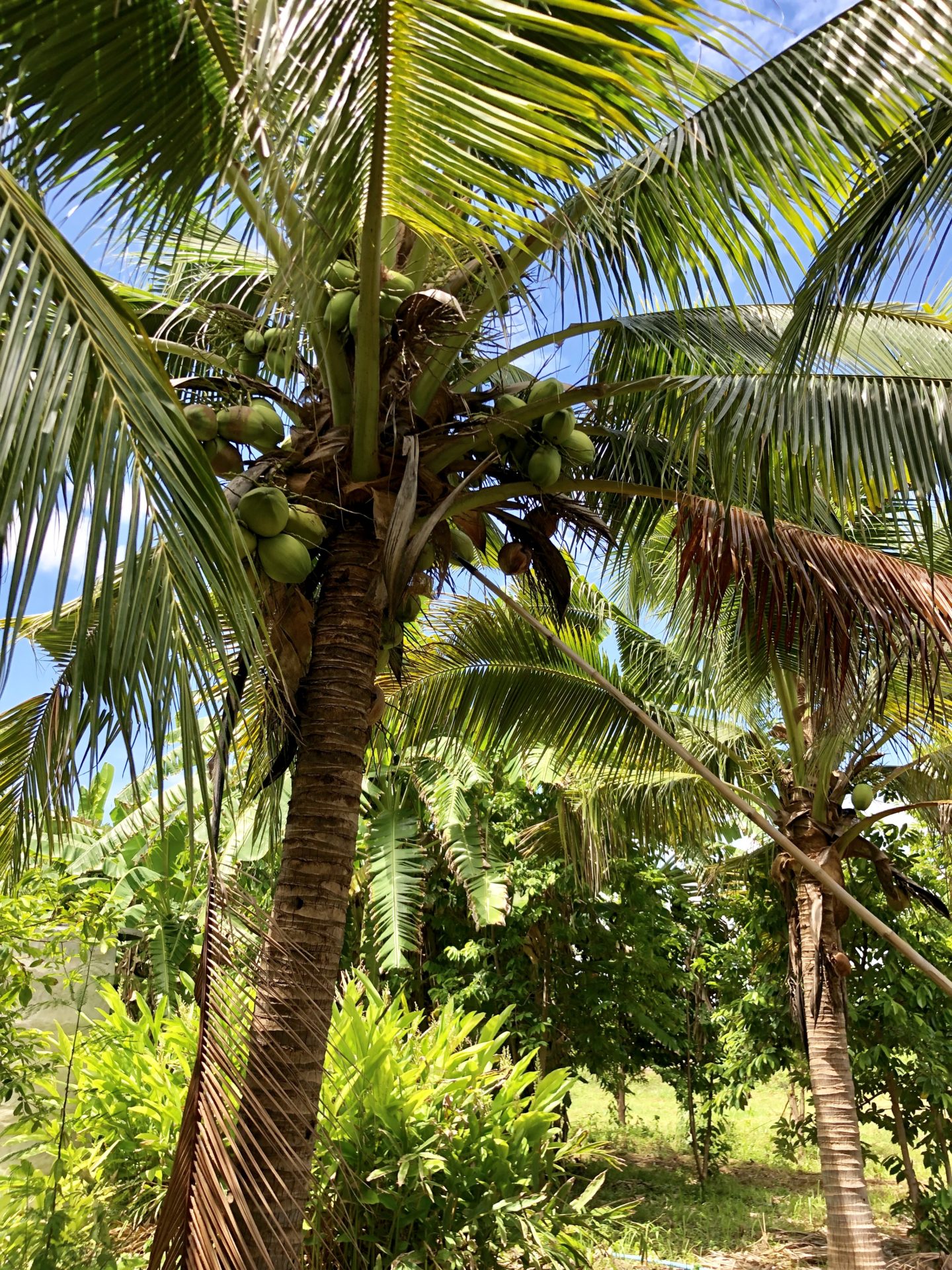
The food at the farm
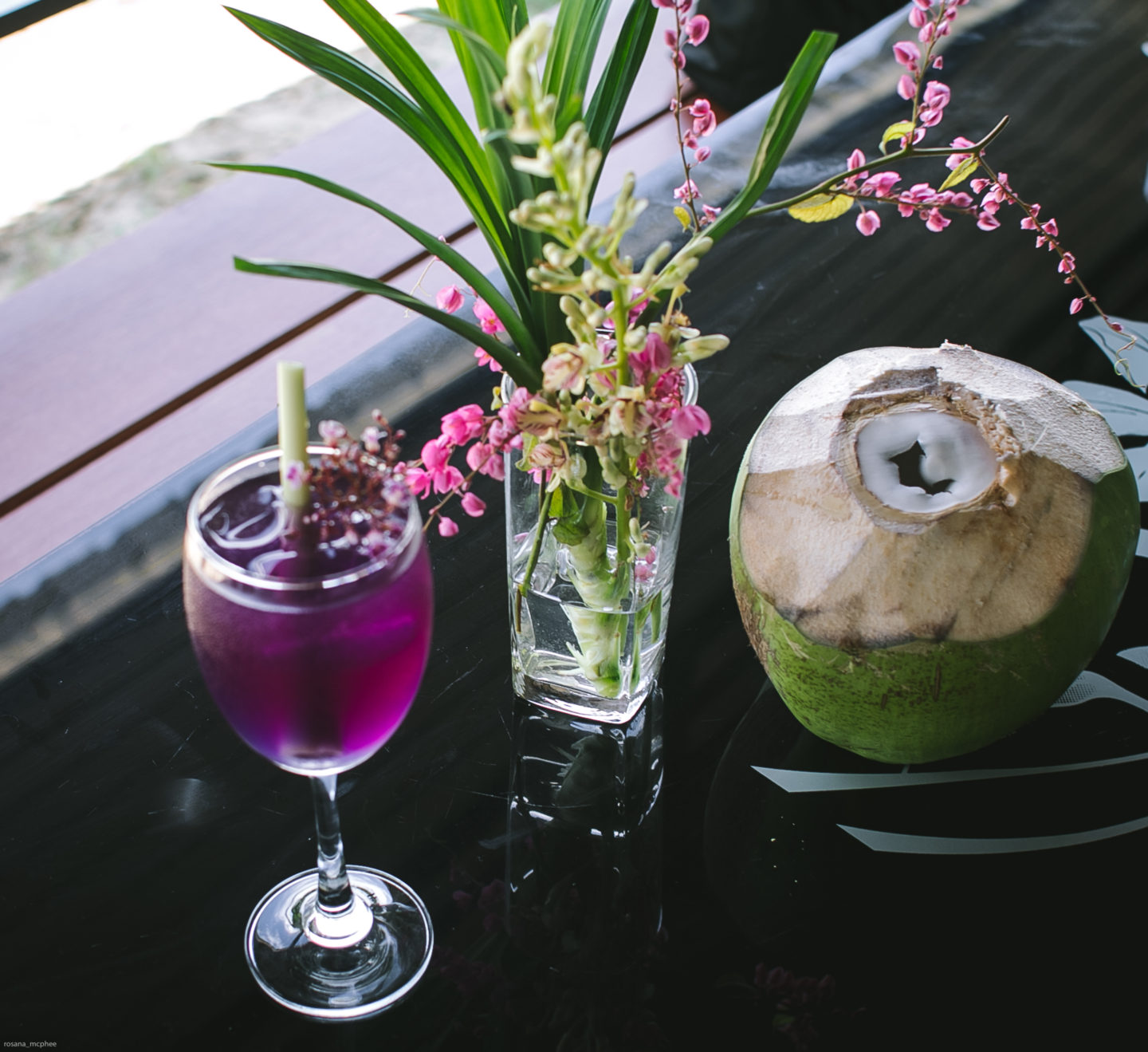
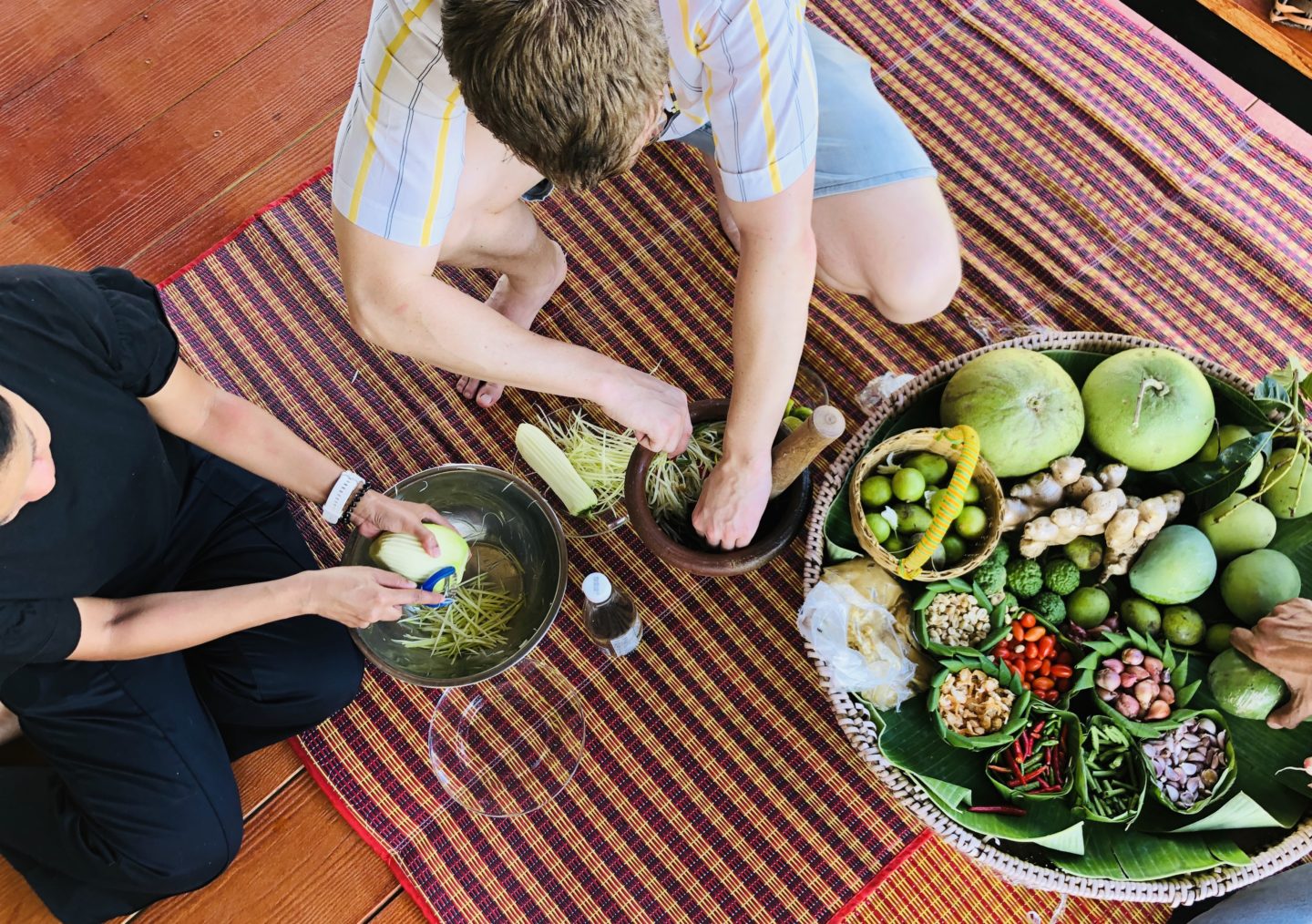
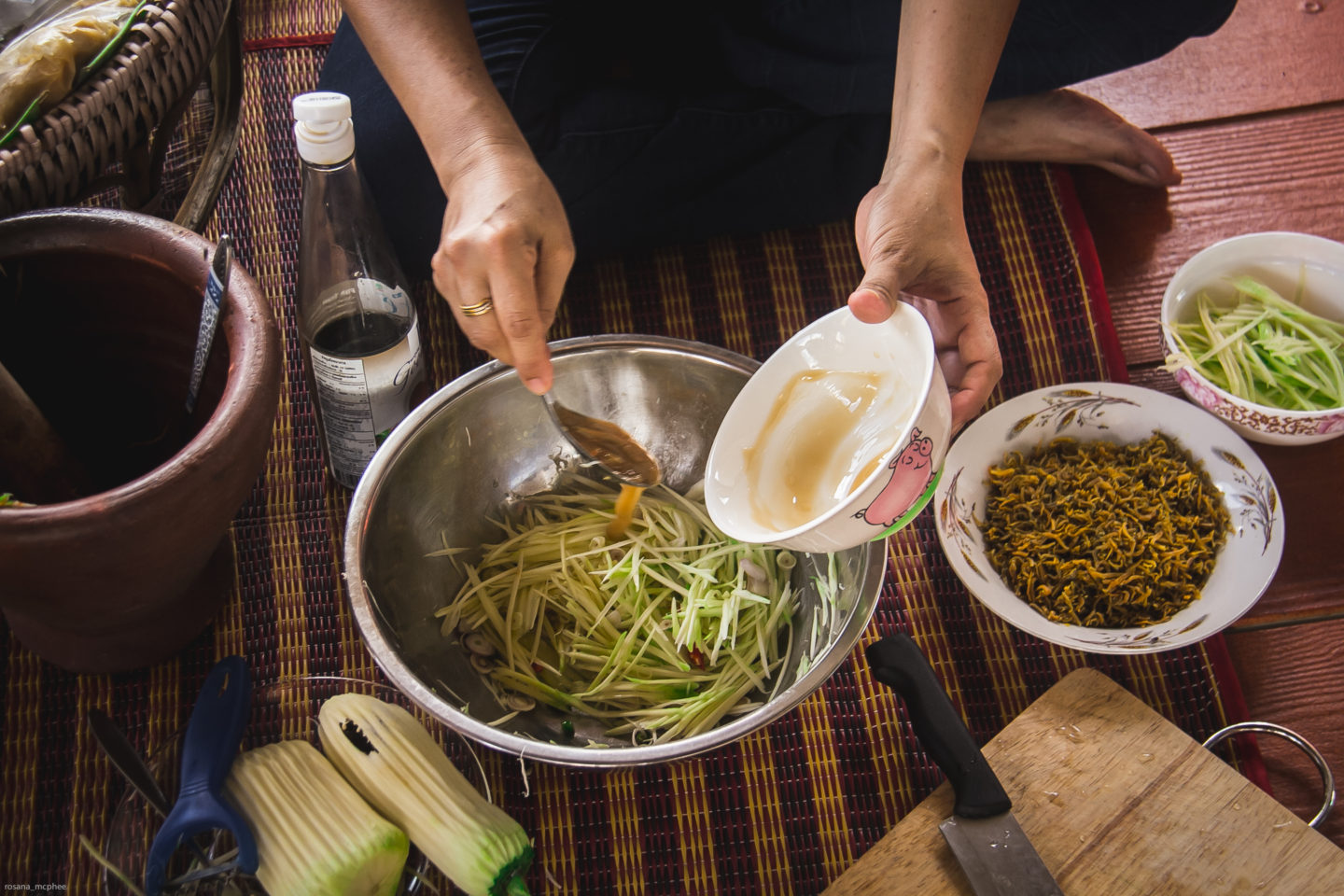
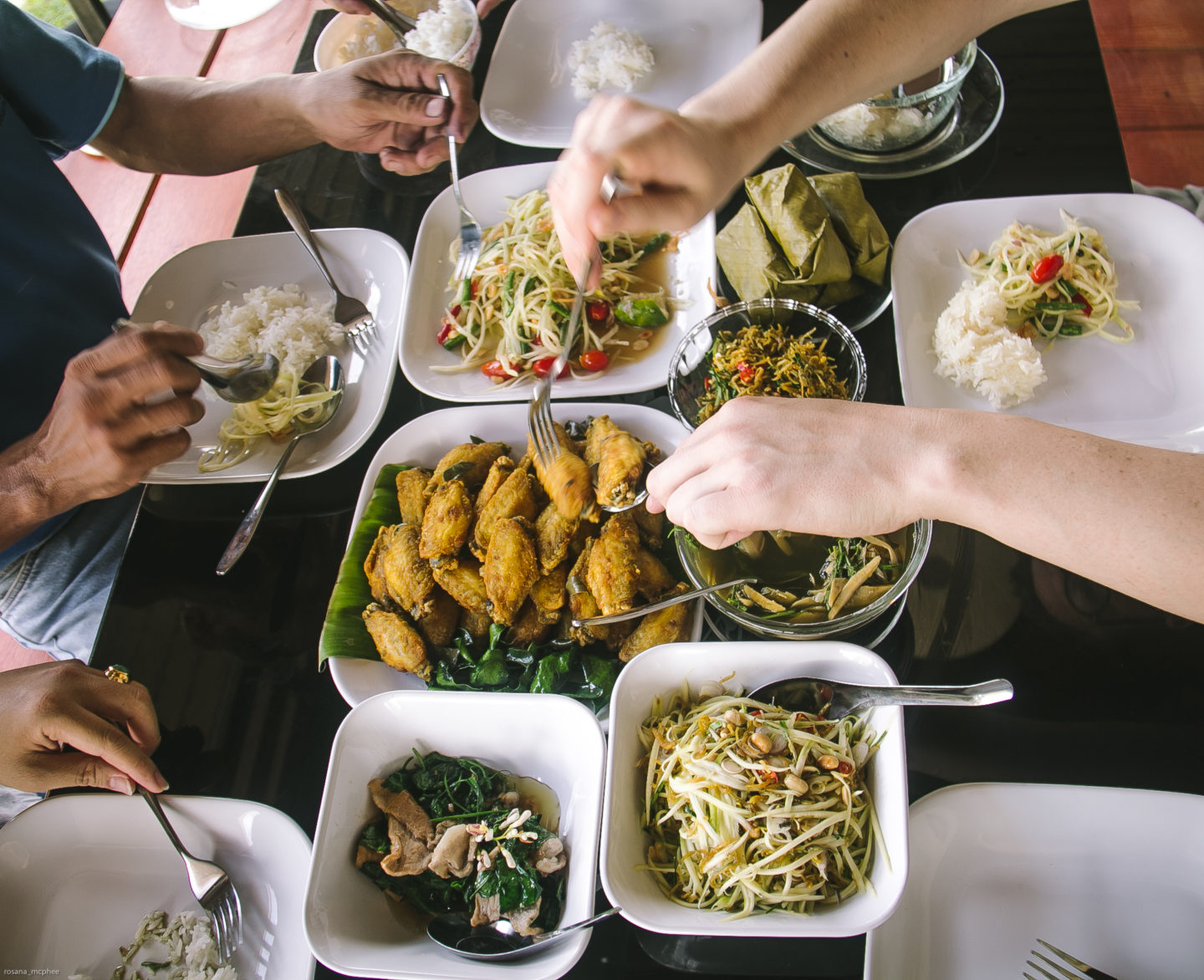
Green papaya salad, made with shredded unripe papaya, chillies, tamarind, lime, dried shrimp, green beans, roasted peanuts, palm sugar and garlic – very refreshing and healthy.
One of my favourites things were the turmeric and kaffir lime leaves, deep fried chicken wings, made by marinading the chicken wings and deep frying some kaffir lime leaves, draining some and leaving more in the deep fryer before frying the chicken in the oil.
Mango salad by Jamie, which is a special mango salad with small deep fried fish, shallots, chillies, lemongrass, Thai shallots, coconut sugar and kaffir lime leaves.
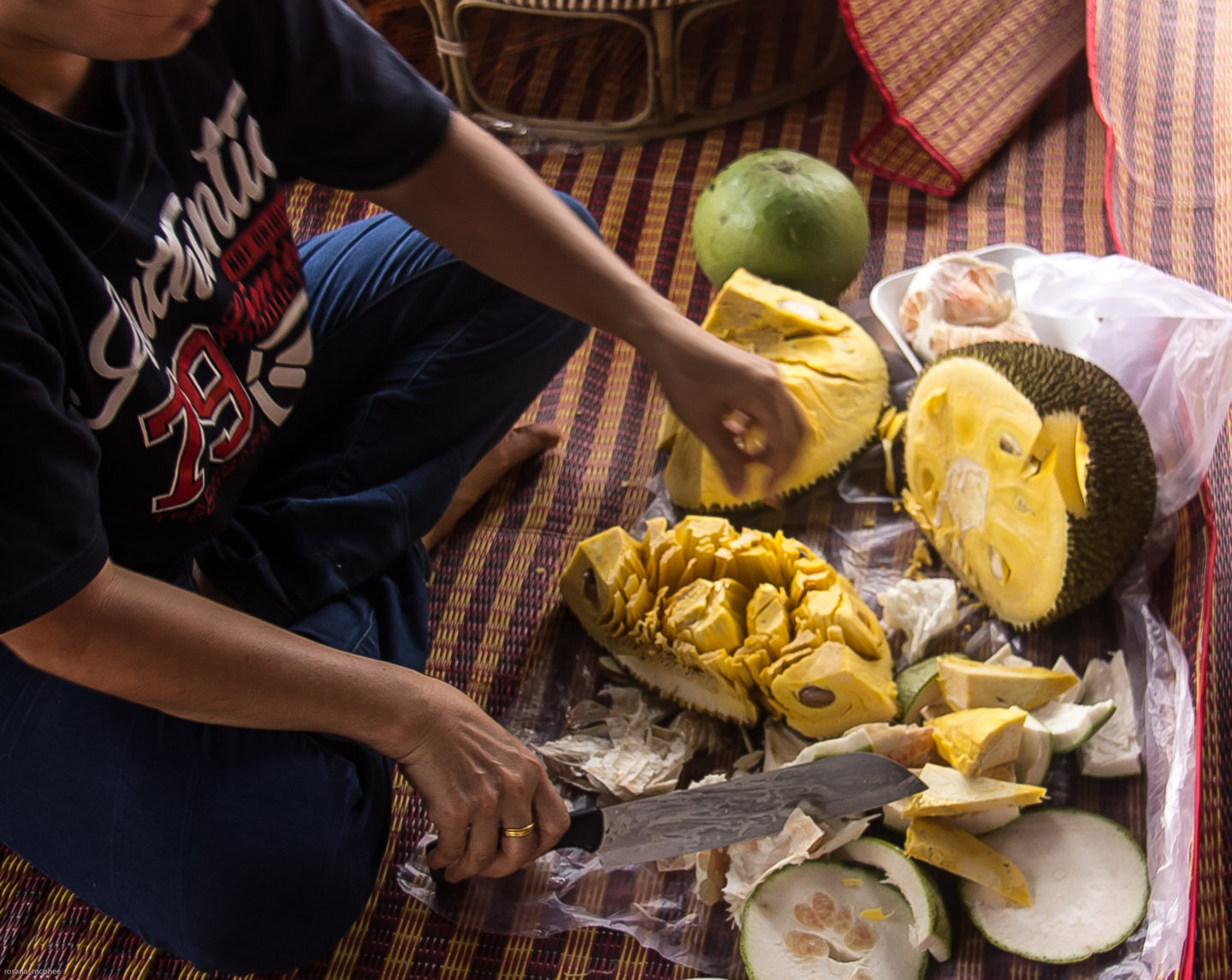
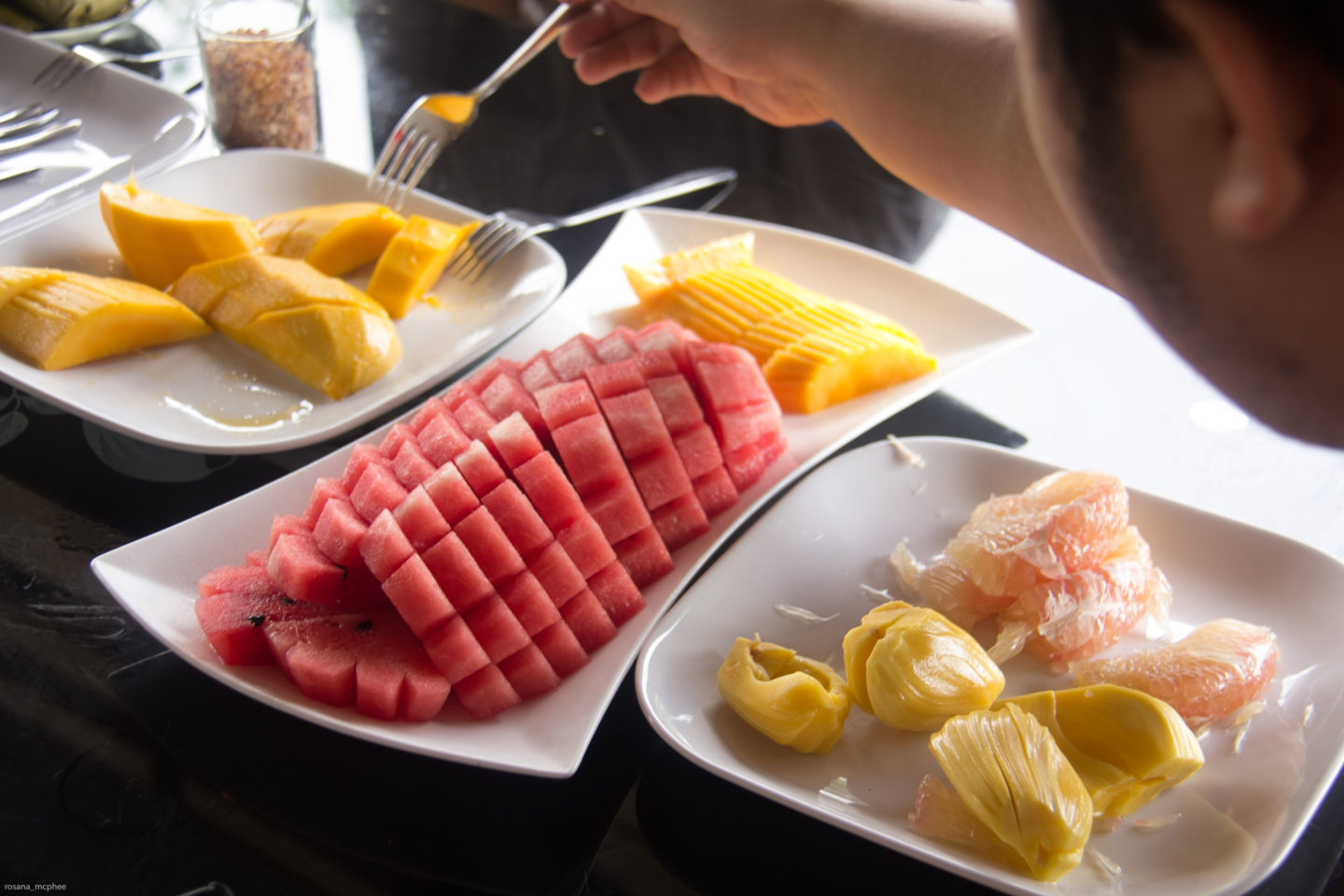
Visiting Sampram, Thailand
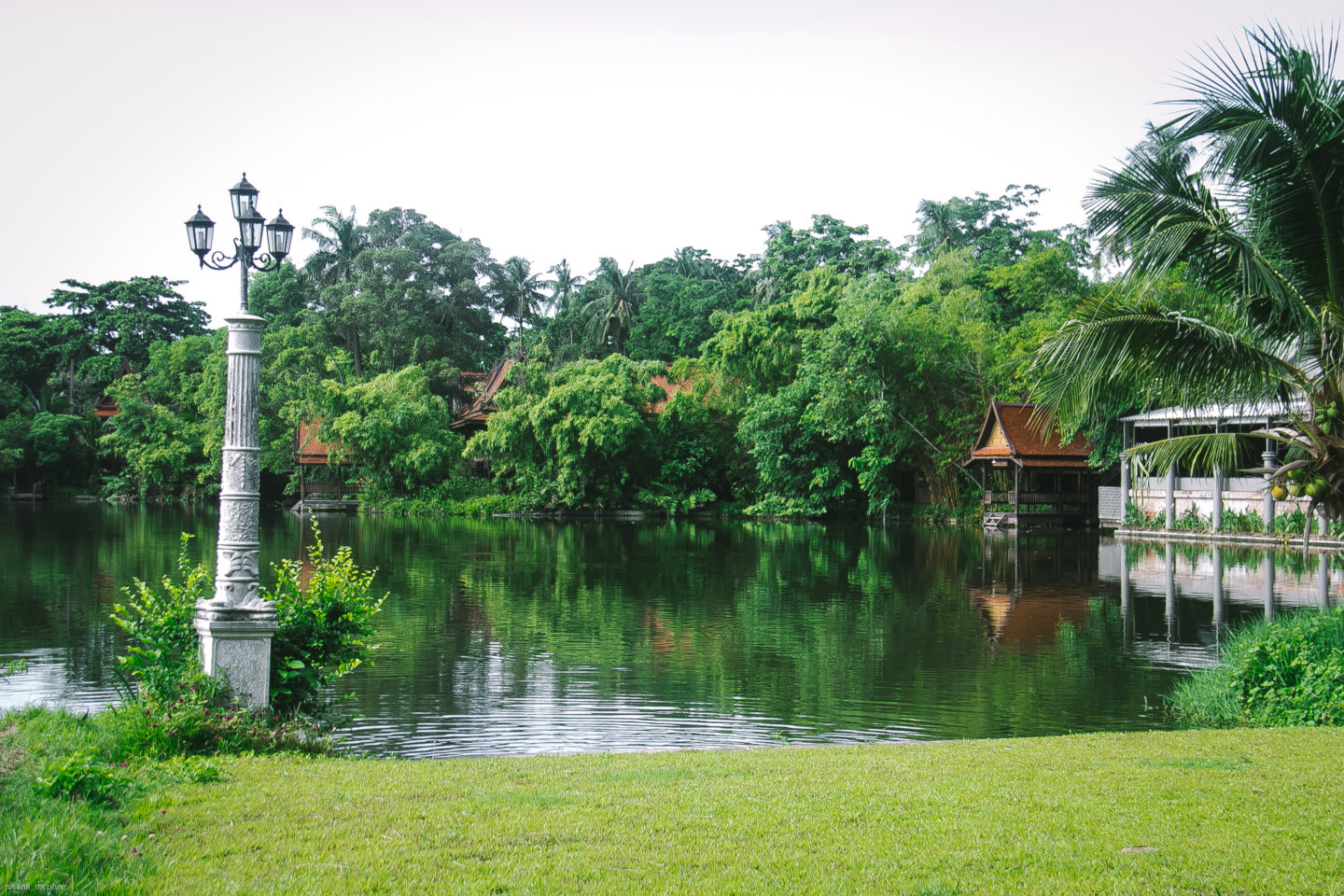
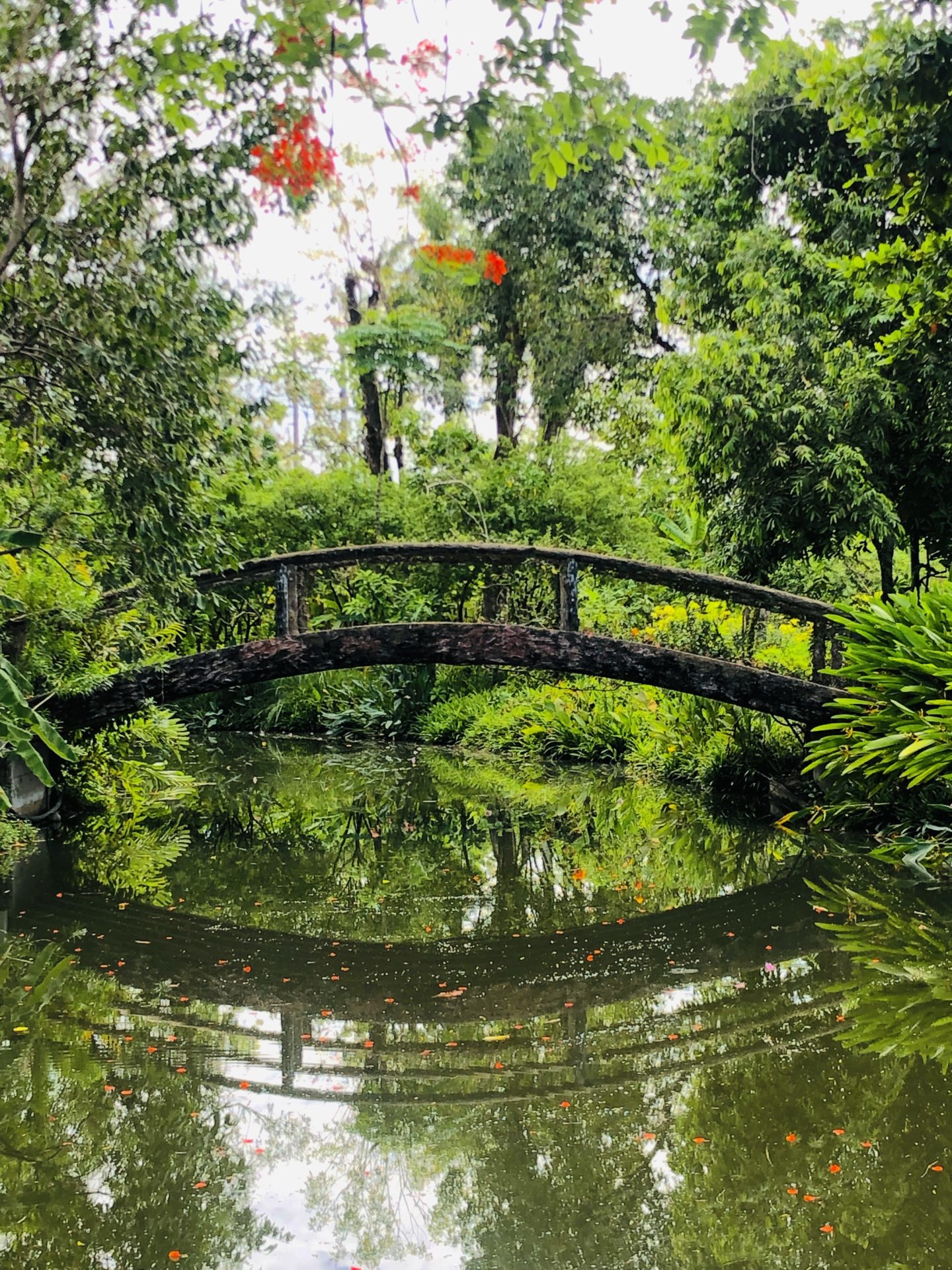
On a day visit to Sampran farm, just one hour from Bangkok along the Tha- Jeen River, you can see a botanical garden, an organic farm, cafes, restaurants, a Thai cultural park, a spa, pagodas, and traditional Thai houses for rental, as well as a hotel.
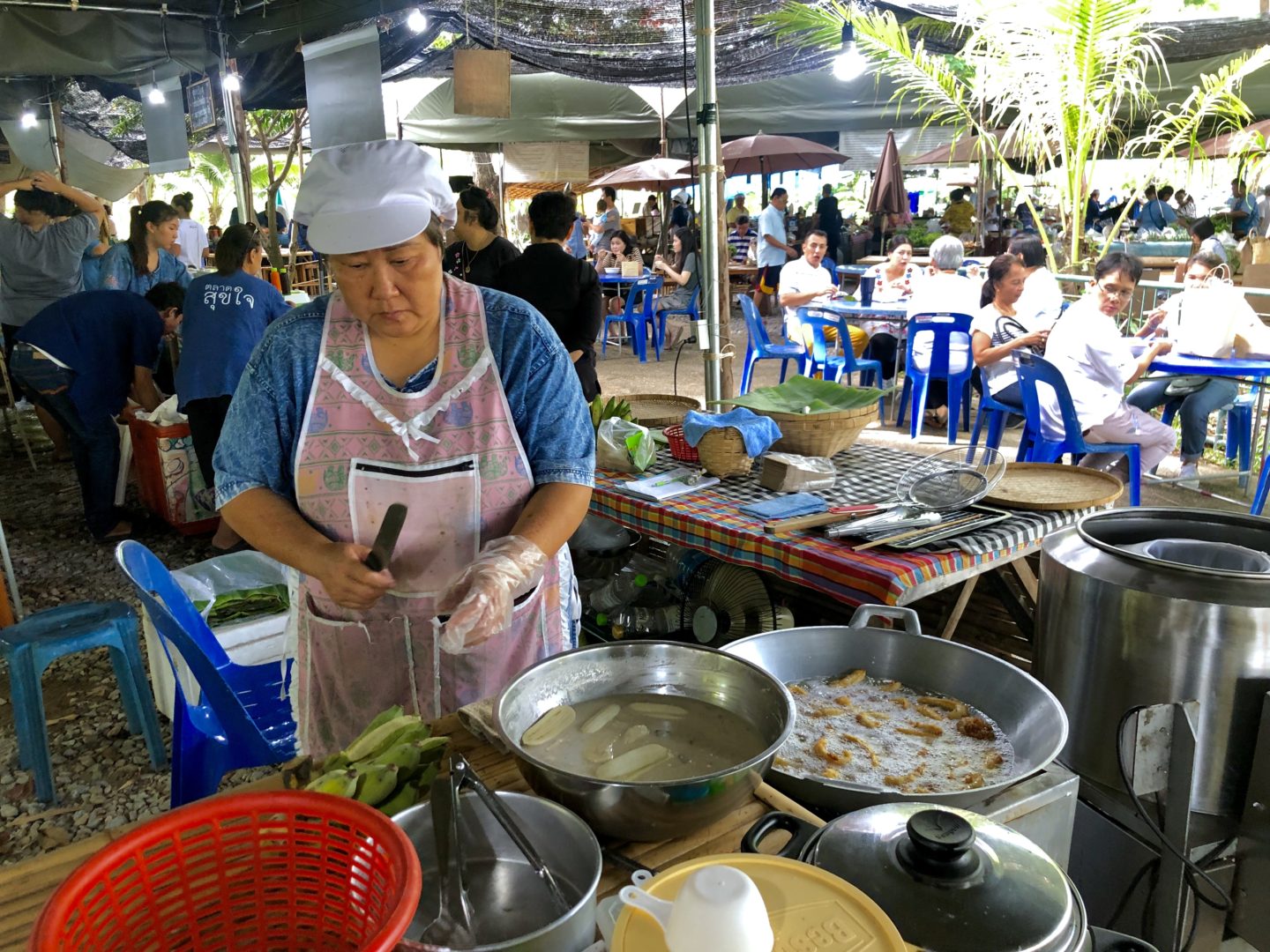
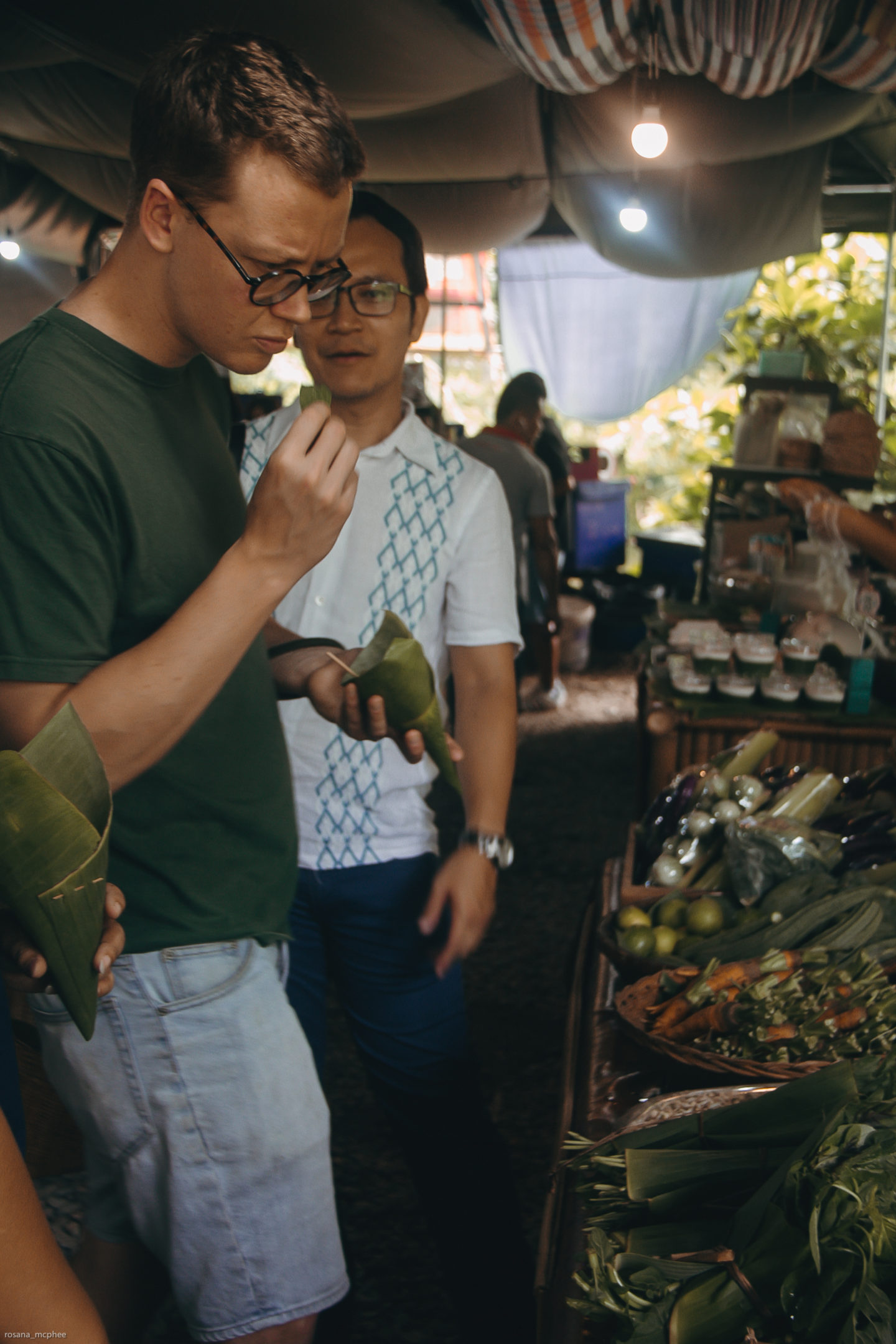
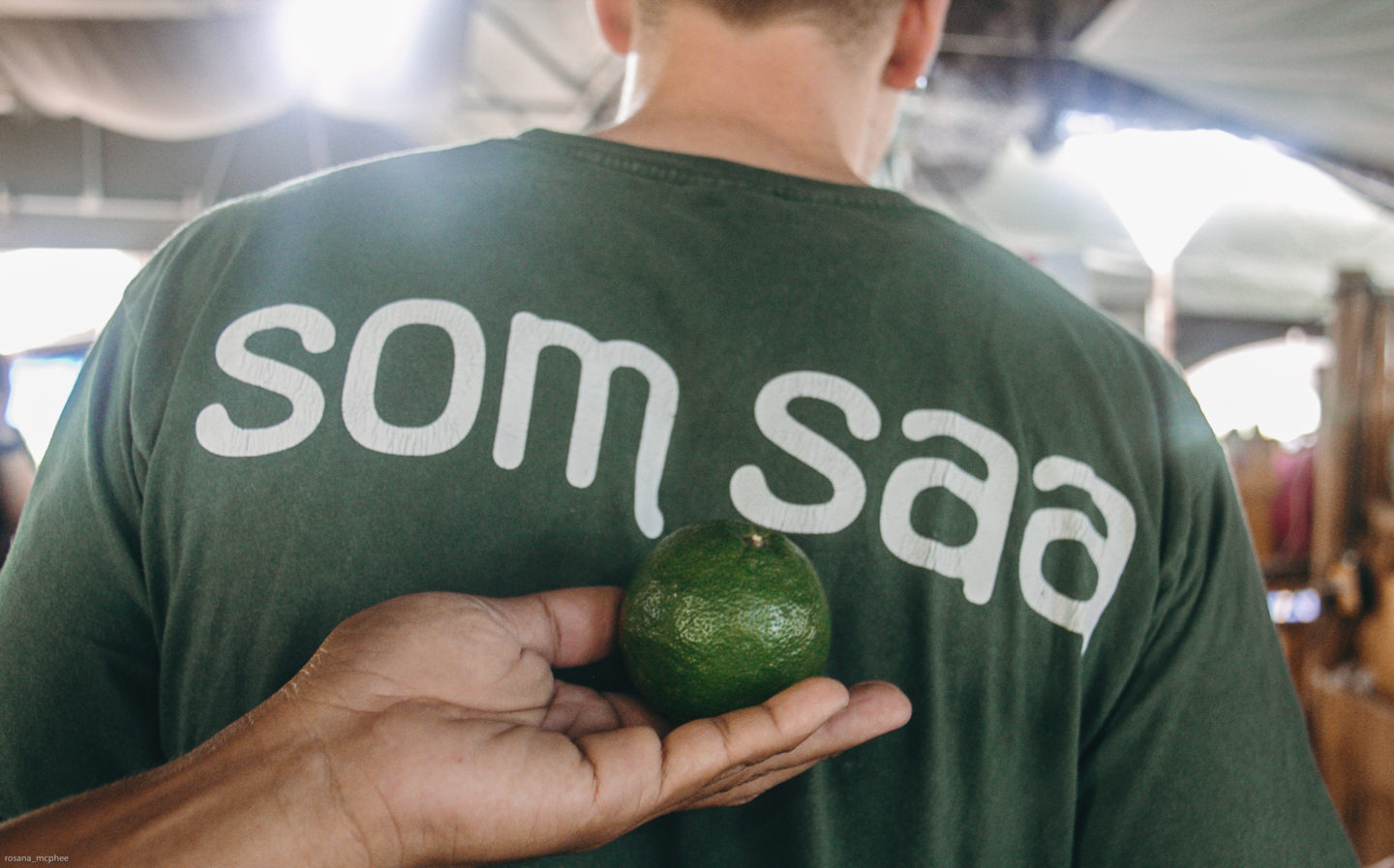
Sookjai Organic Weekend Farmer’s Market is a community market where organic farmers who collaborate with local business and community have been visiting it every weekend for the last eight years.
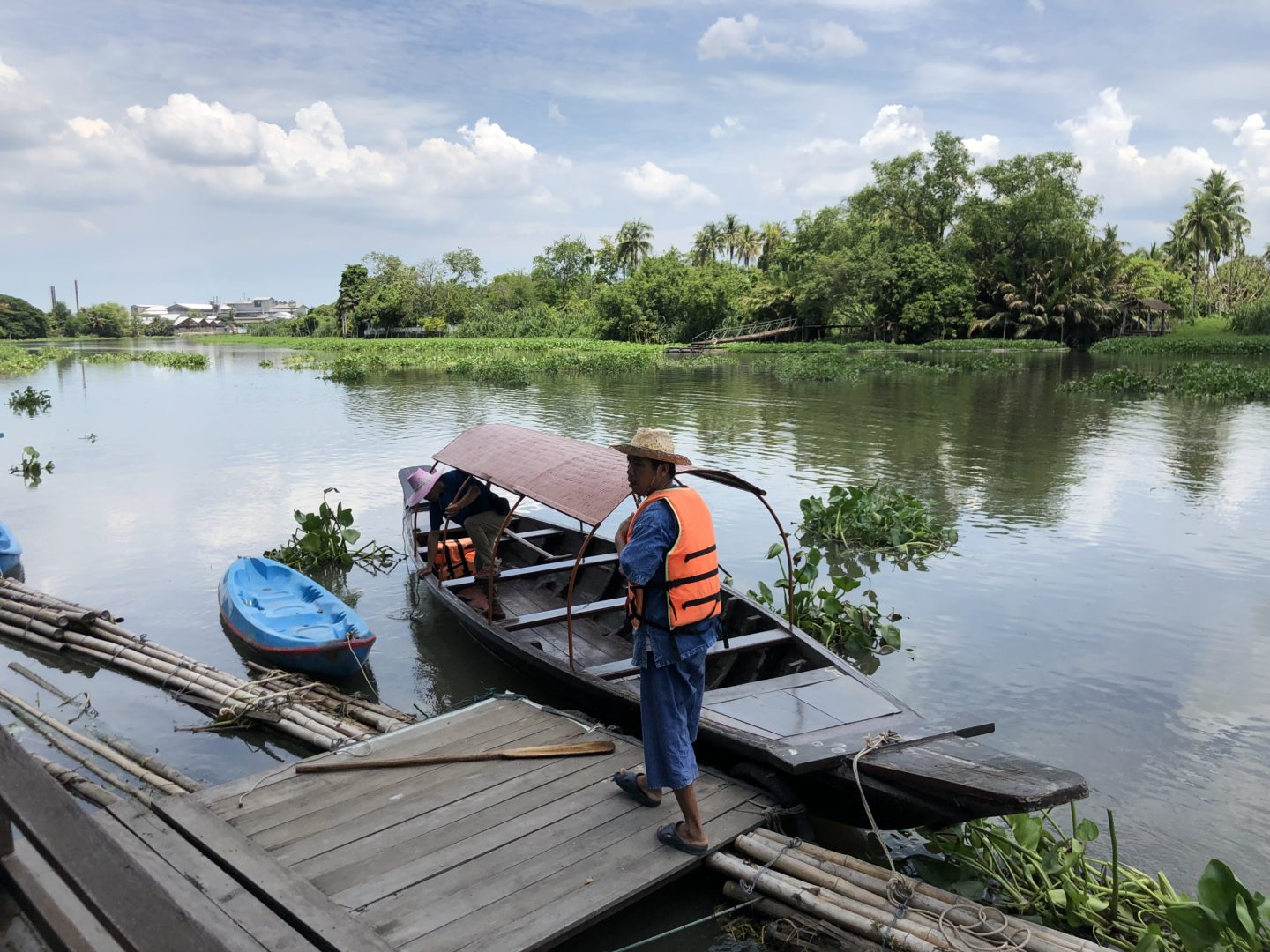
Crossing the river to Patom Organic farm tour, we picked some fresh ingredients to try Thai cooking. I learned how to make salted egg, but Jamie already knew how!
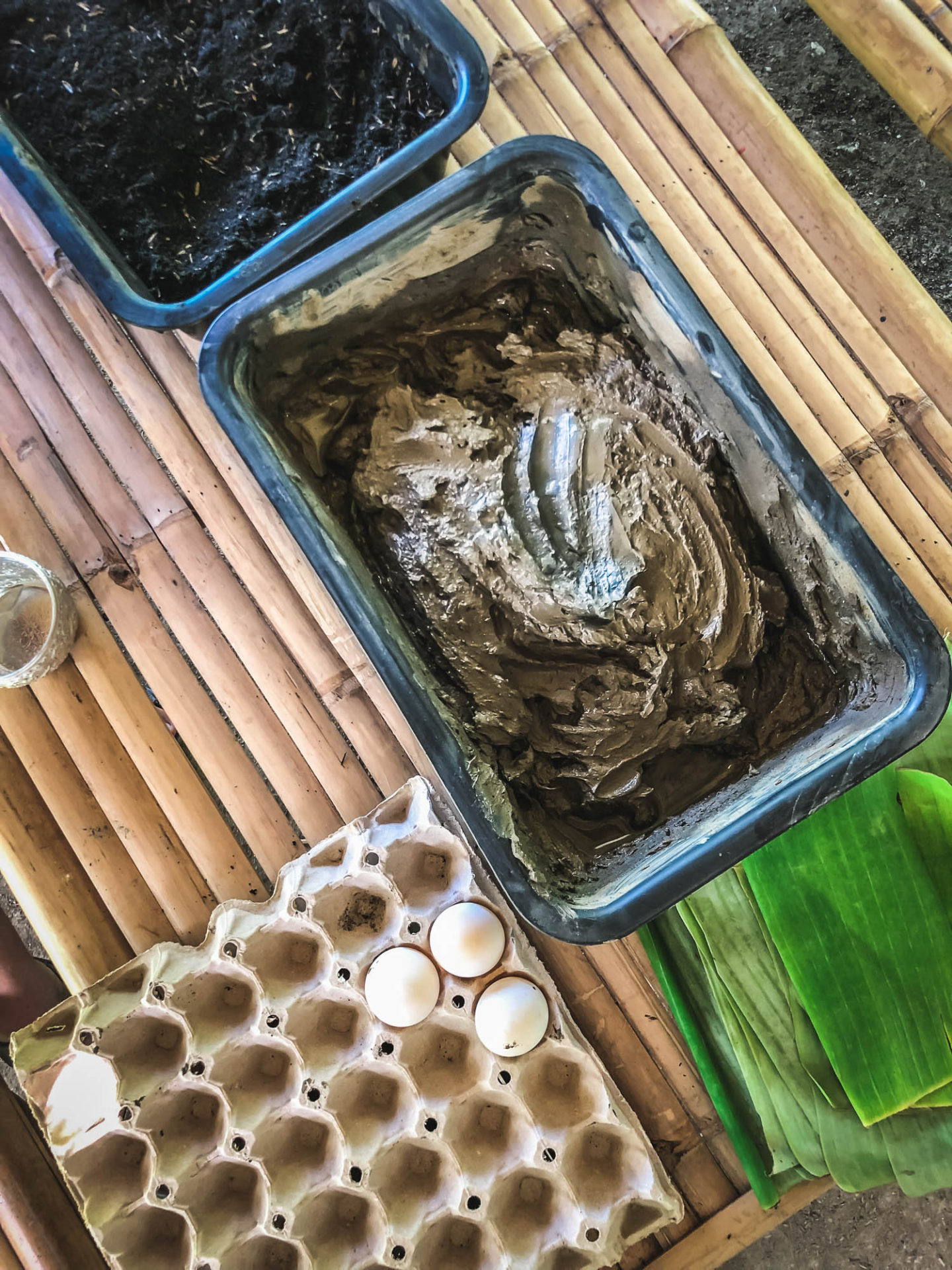
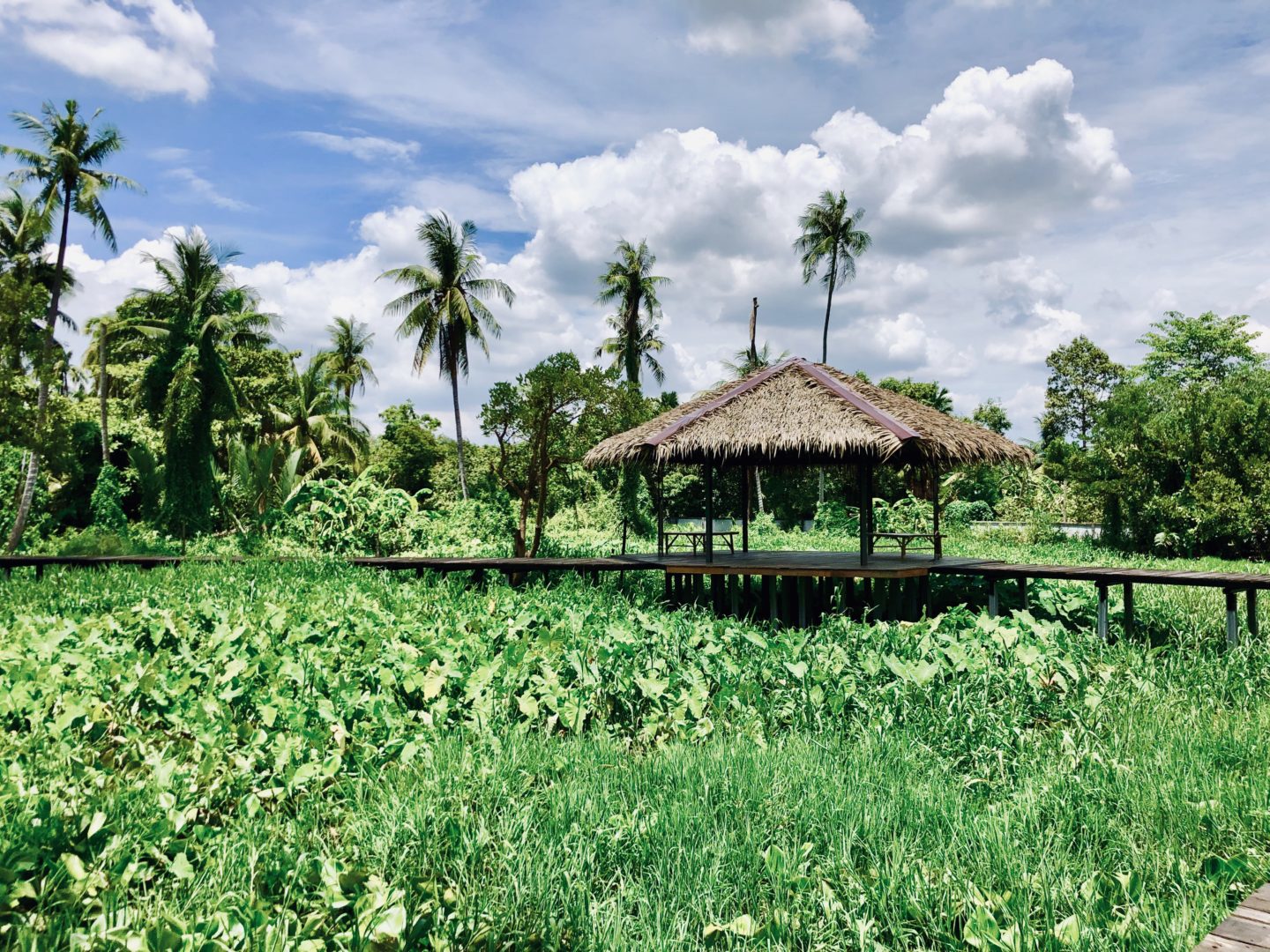
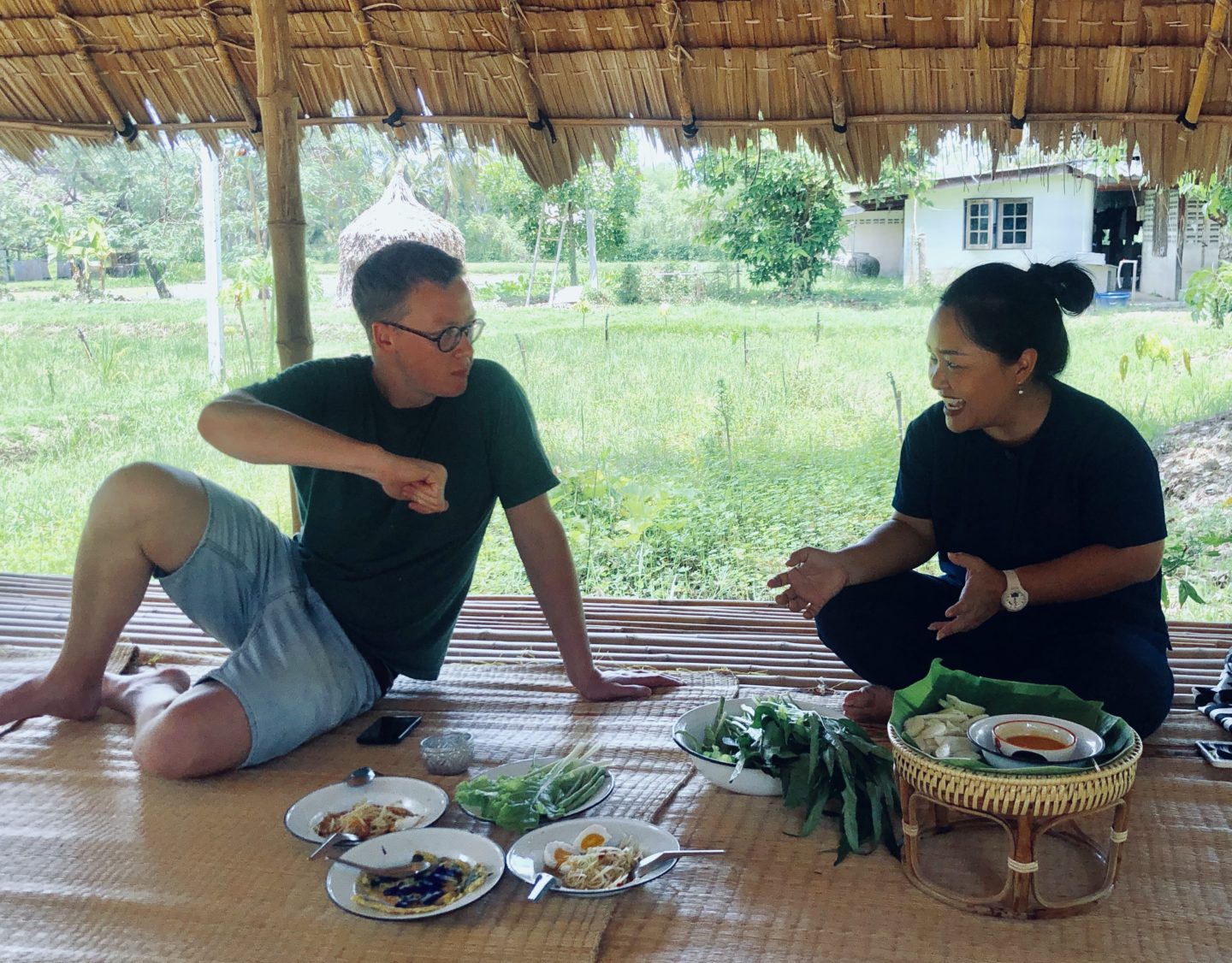
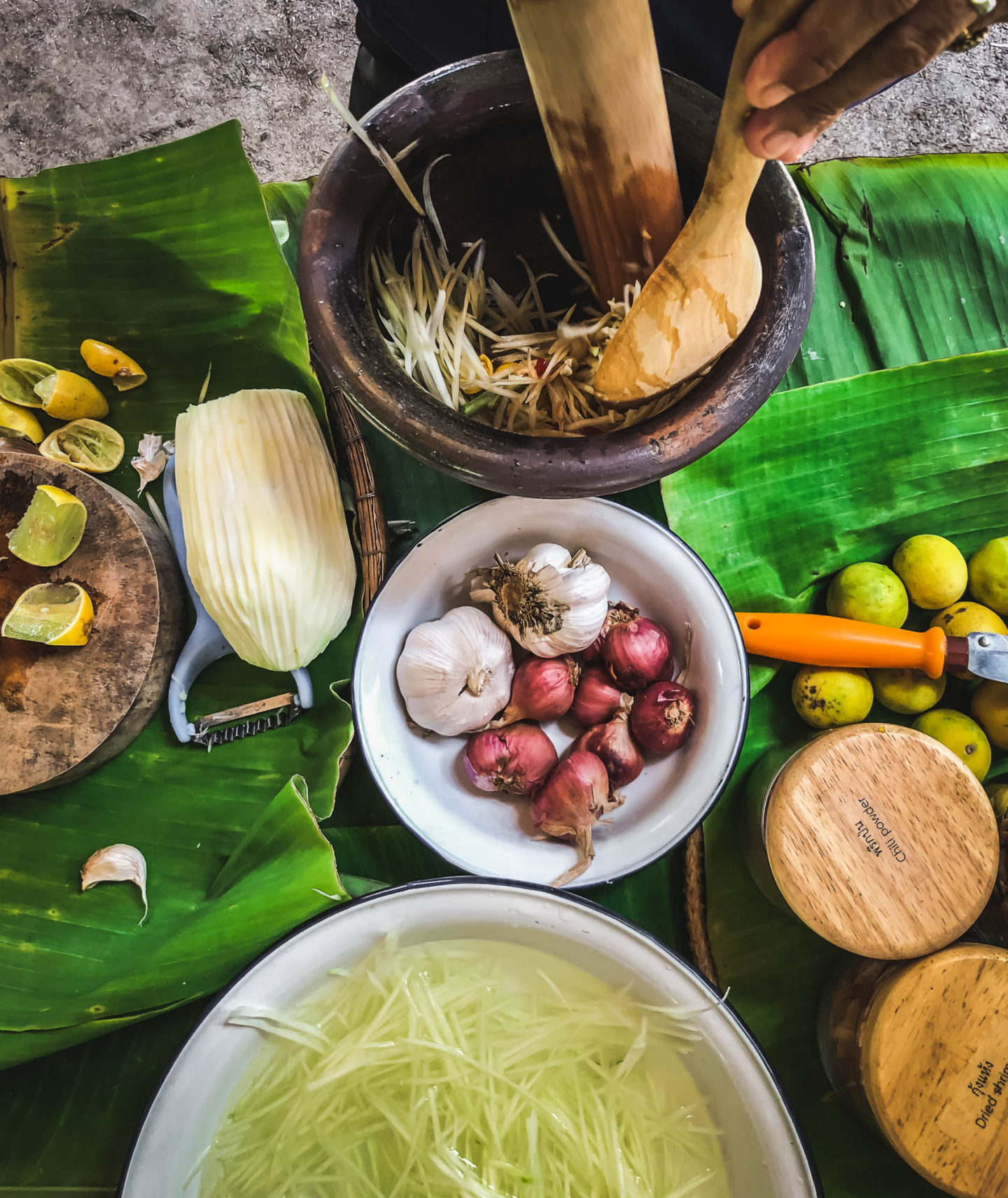
Afterwards, we made an enjoyable visit to Patom Organic Village to experience some traditional workshops related to rice, banana and herbs. I was delighted to learn how to make banana leaf dishes.
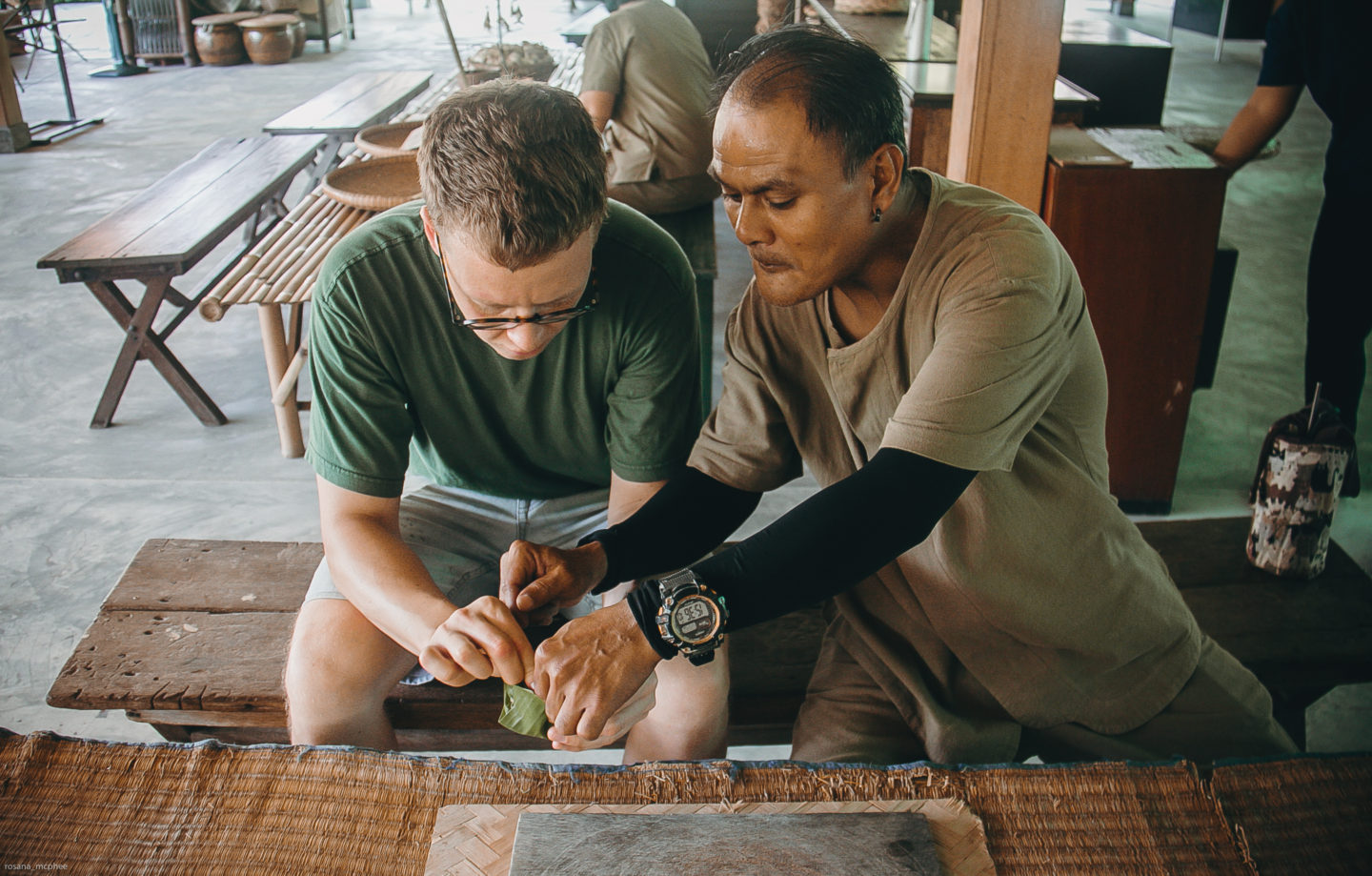
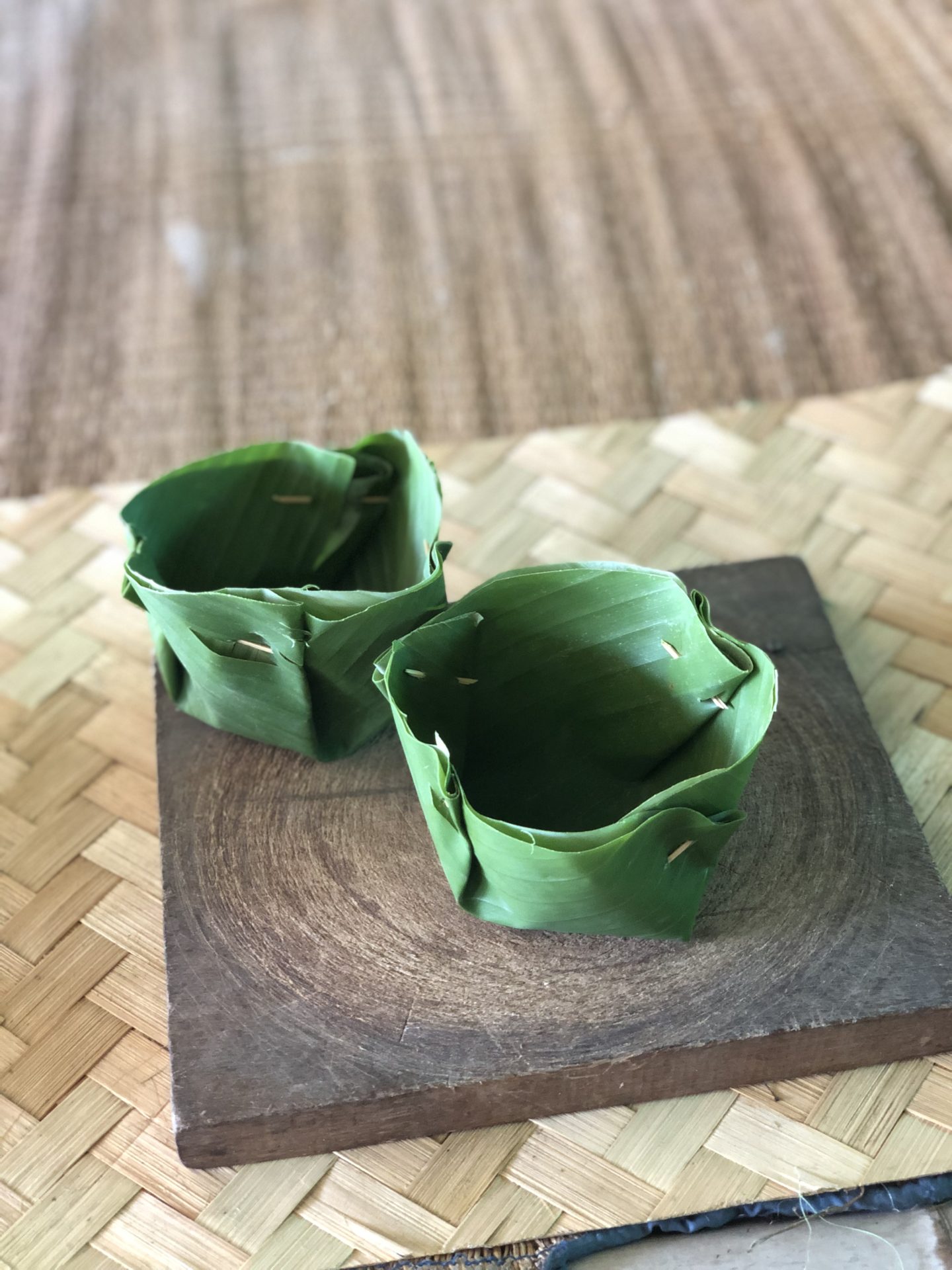
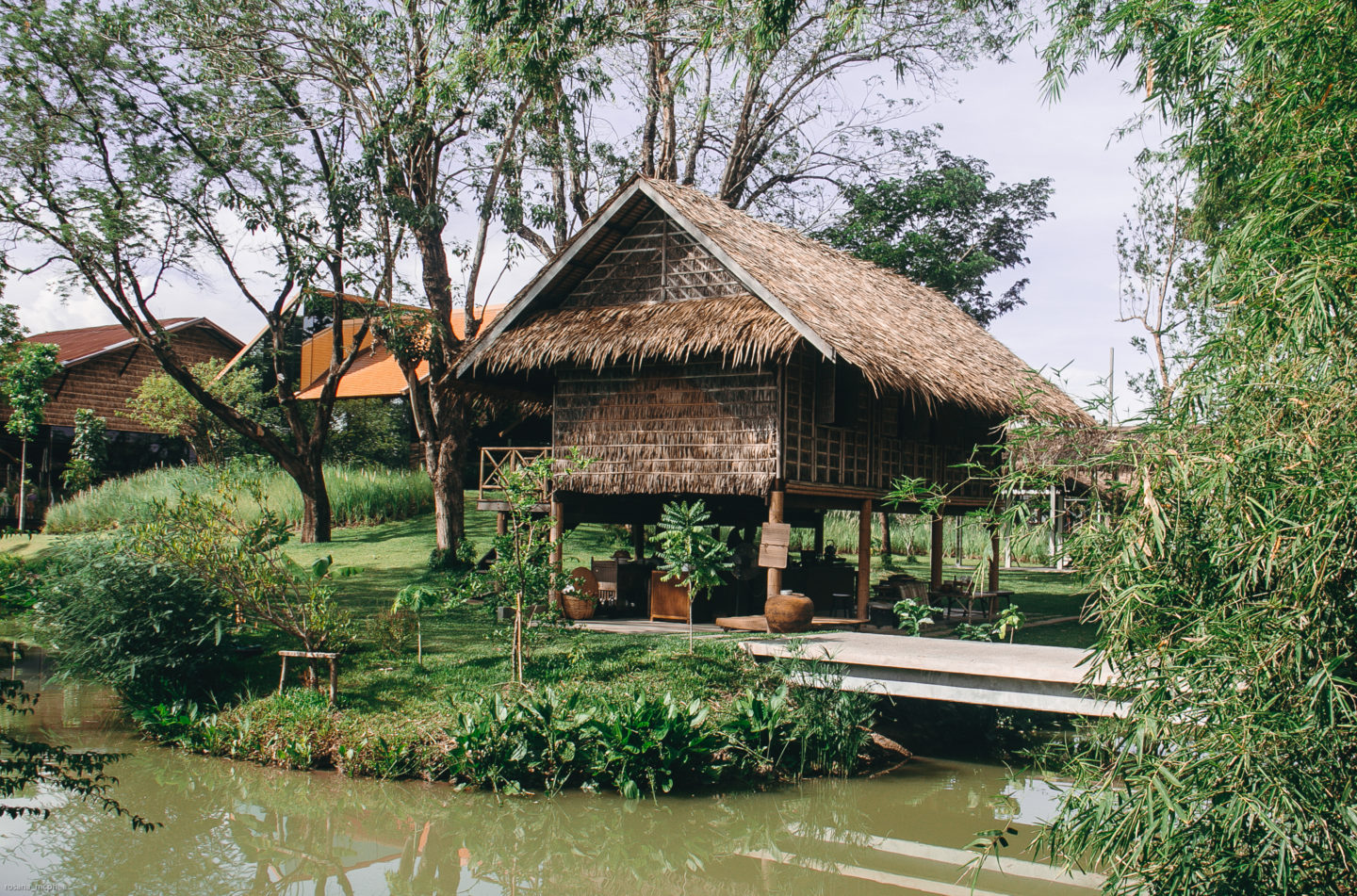
We also had lunch at Inn Chan restaurant, where 80% of the ingredients are organically sourced from the local farmers or their own farm. Our gastronomic experience in Bangkok and beyond ended with this Sampran visit and a fabulous lunch.
More about Sampram head to their website: Sampram Riverside
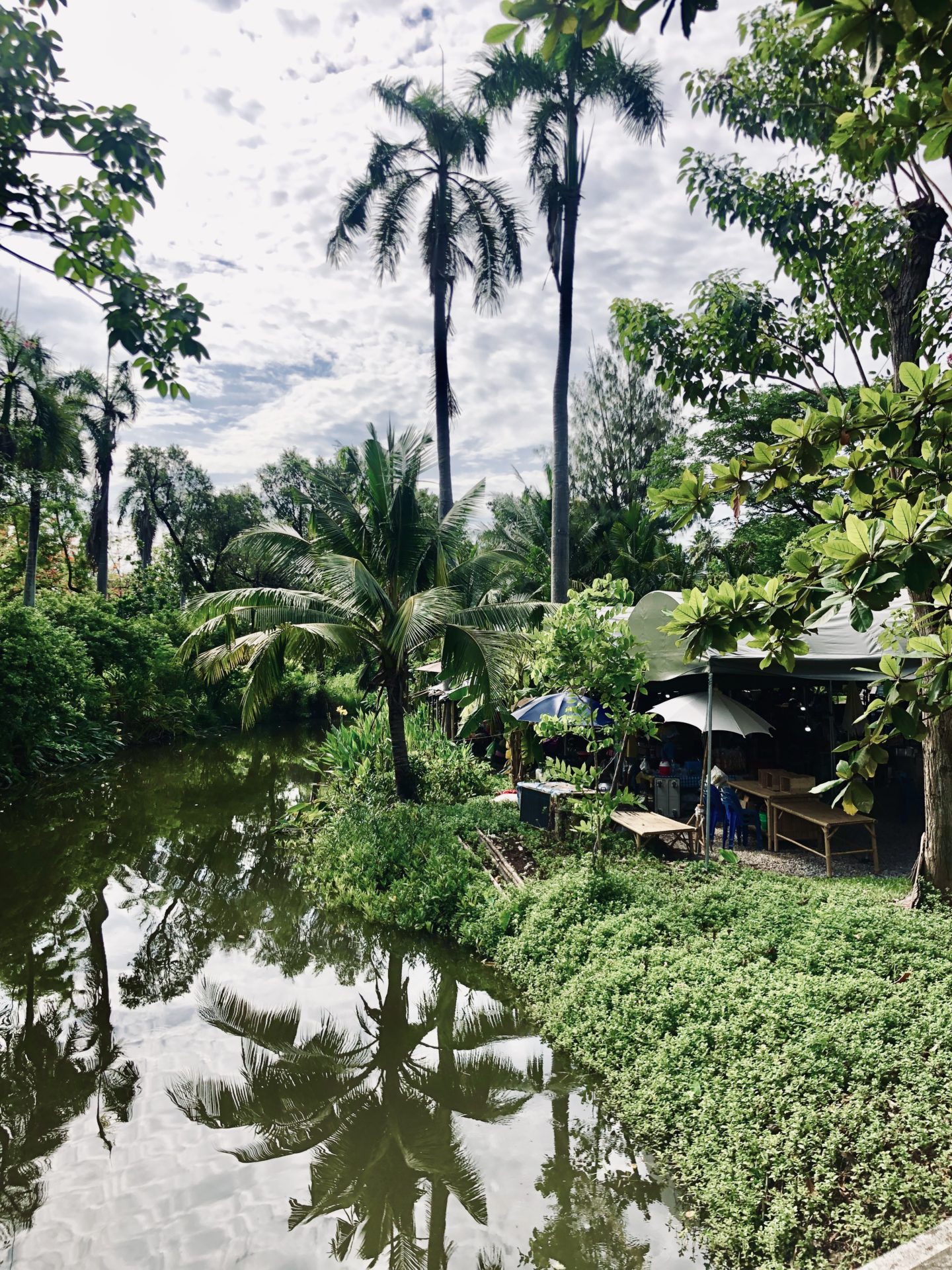
Part of this travel series :
PIN FOR LATER
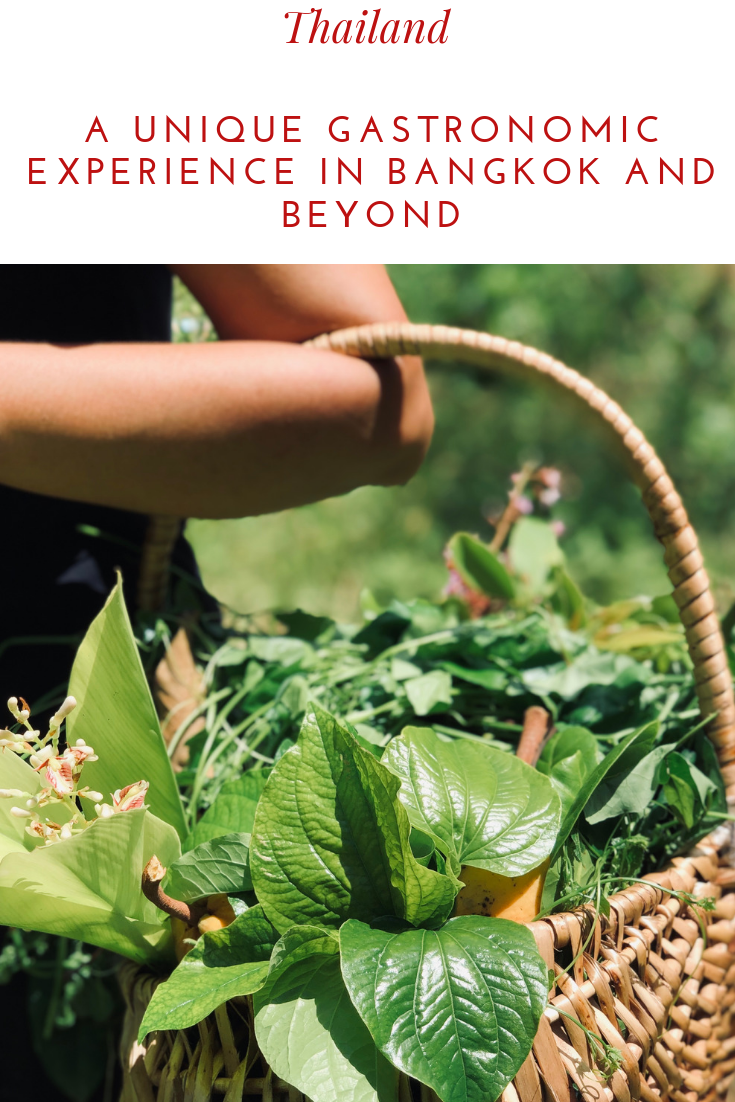
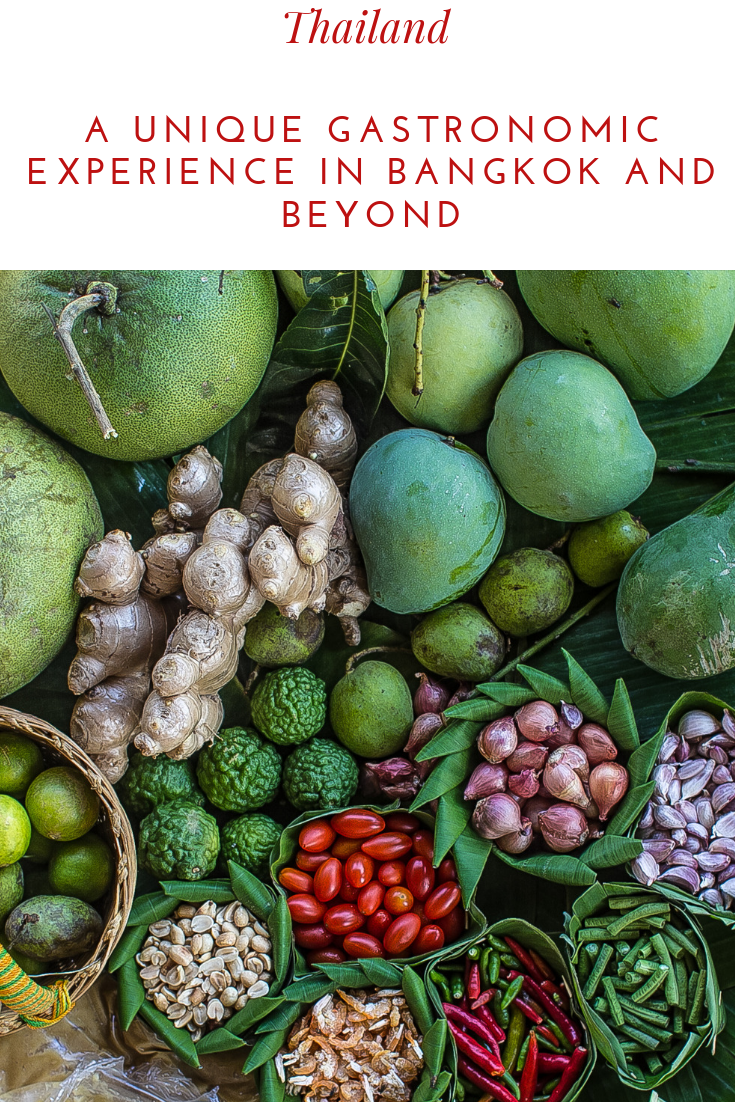
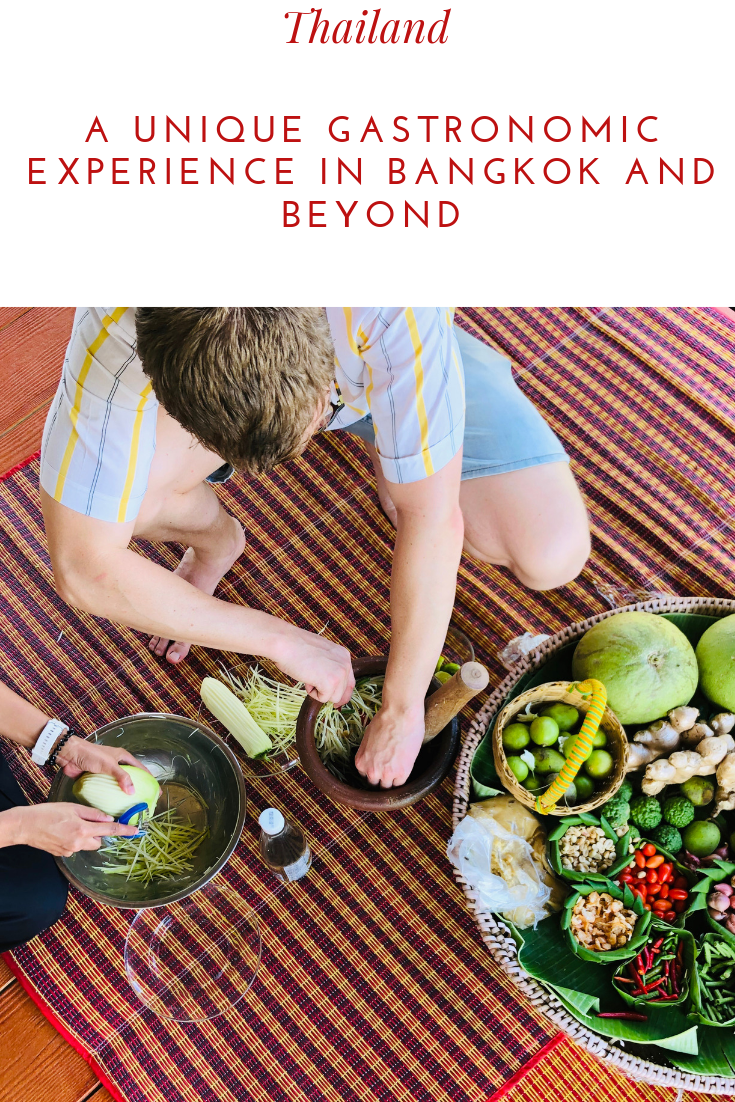
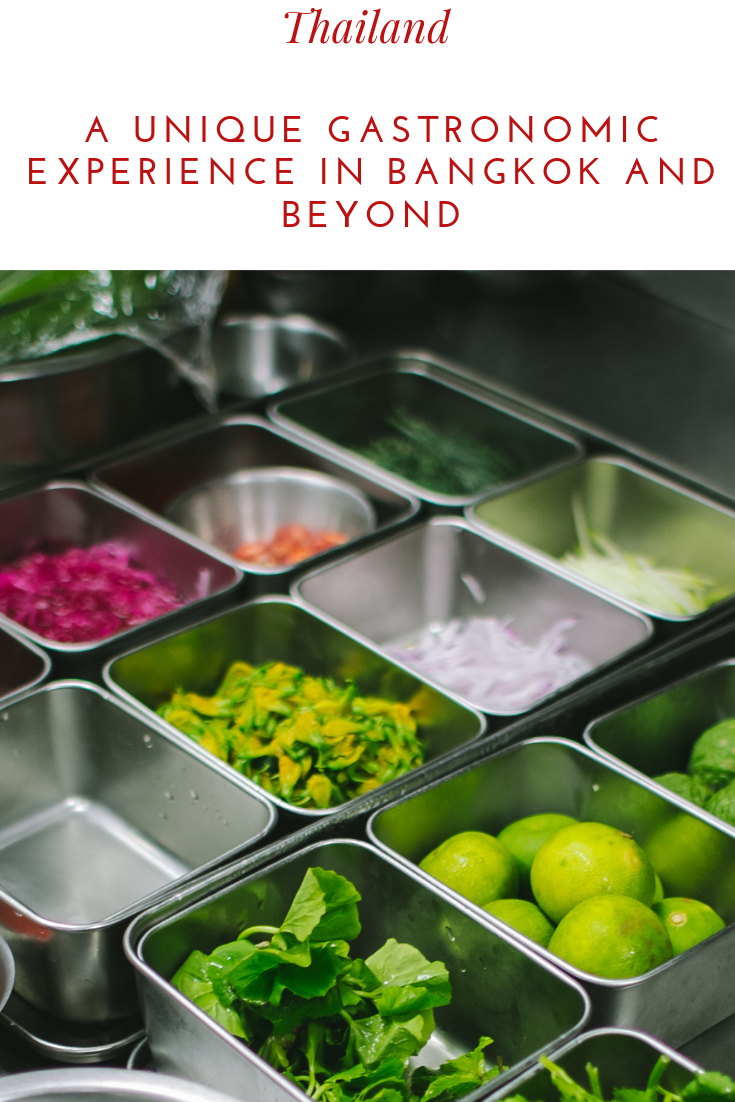
Disclosure: I was part of this trip accompanying the 2019 winner Jamie Rowlands to Bangkok and beyond on a gastronomic experience as part of the ‘Young Chef of the Year: Thai Cuisine’ competition prize organised by Office of Commercial Affairs, Royal Thai Embassy on behalf of the Department of International Trade Promotion (DITP), Ministry of Commerce’ and Red Communications. All words and photos are my own.
